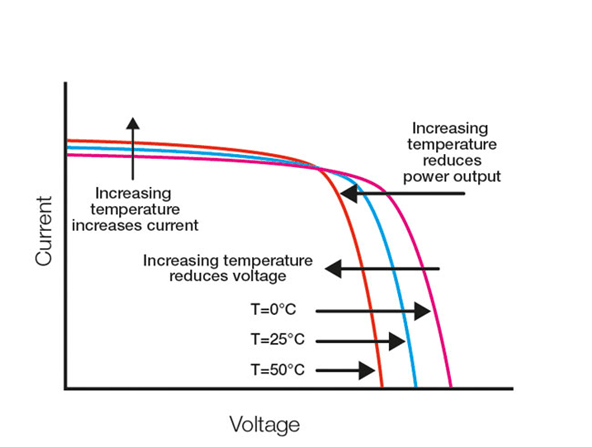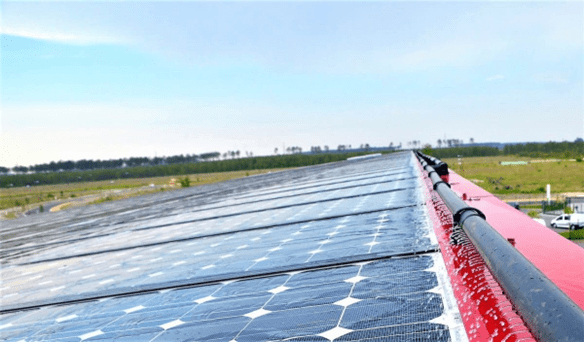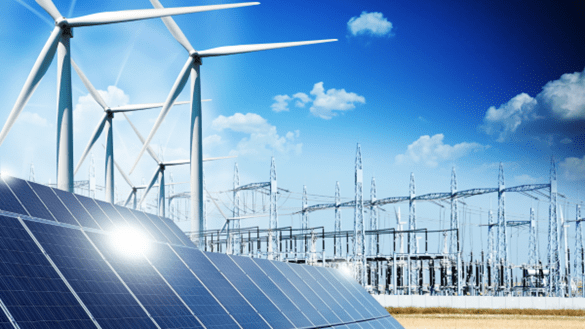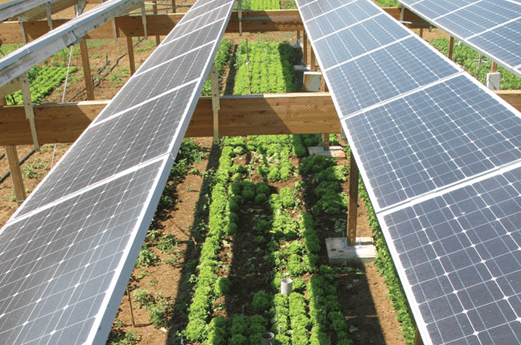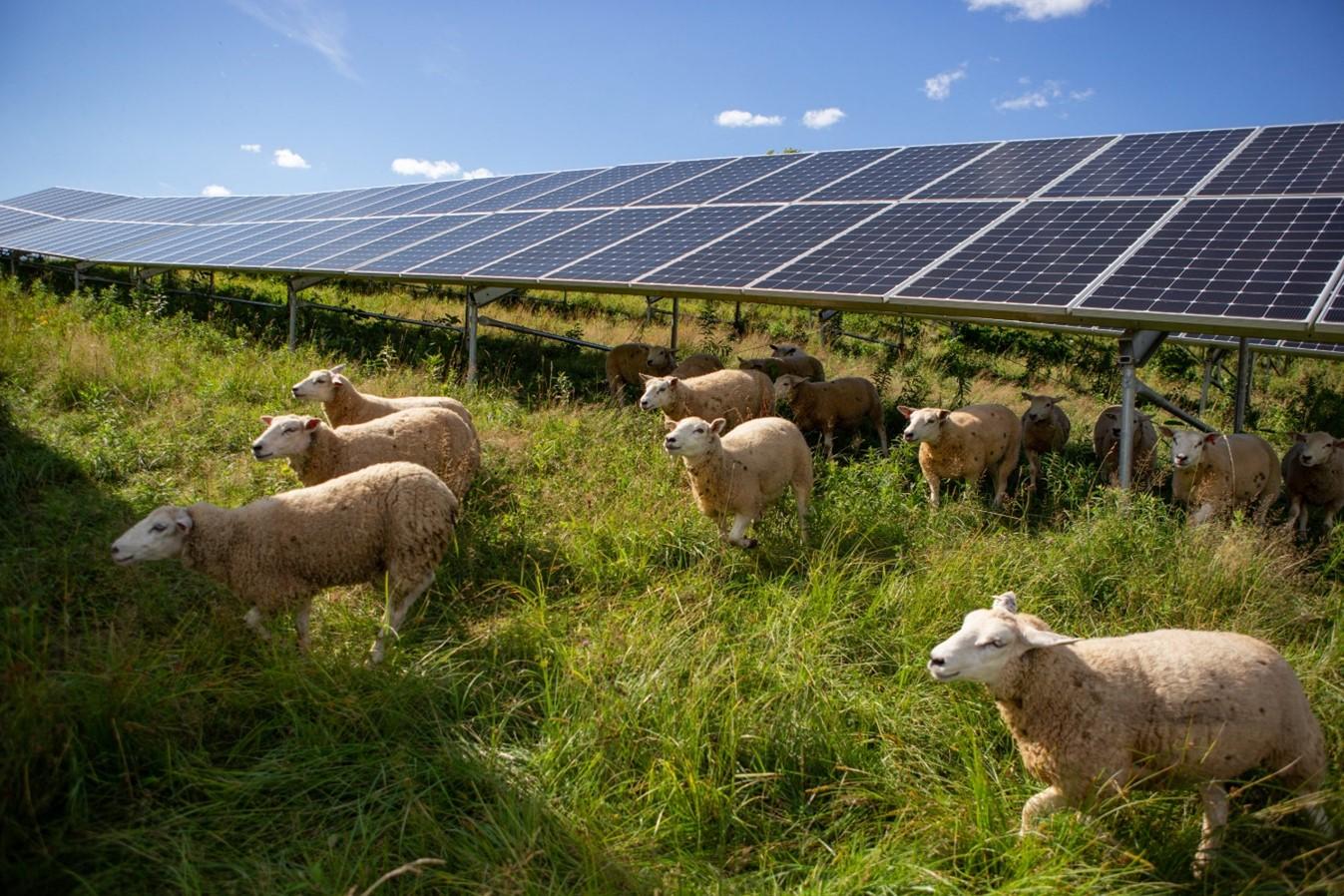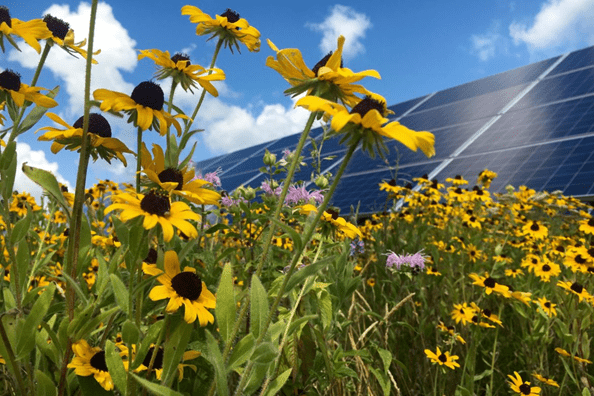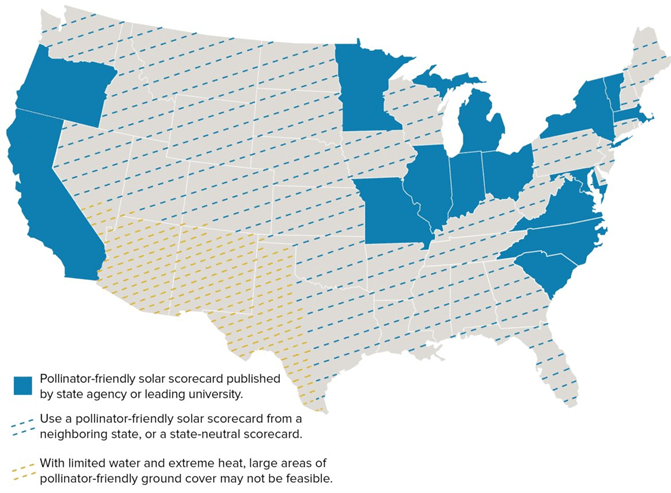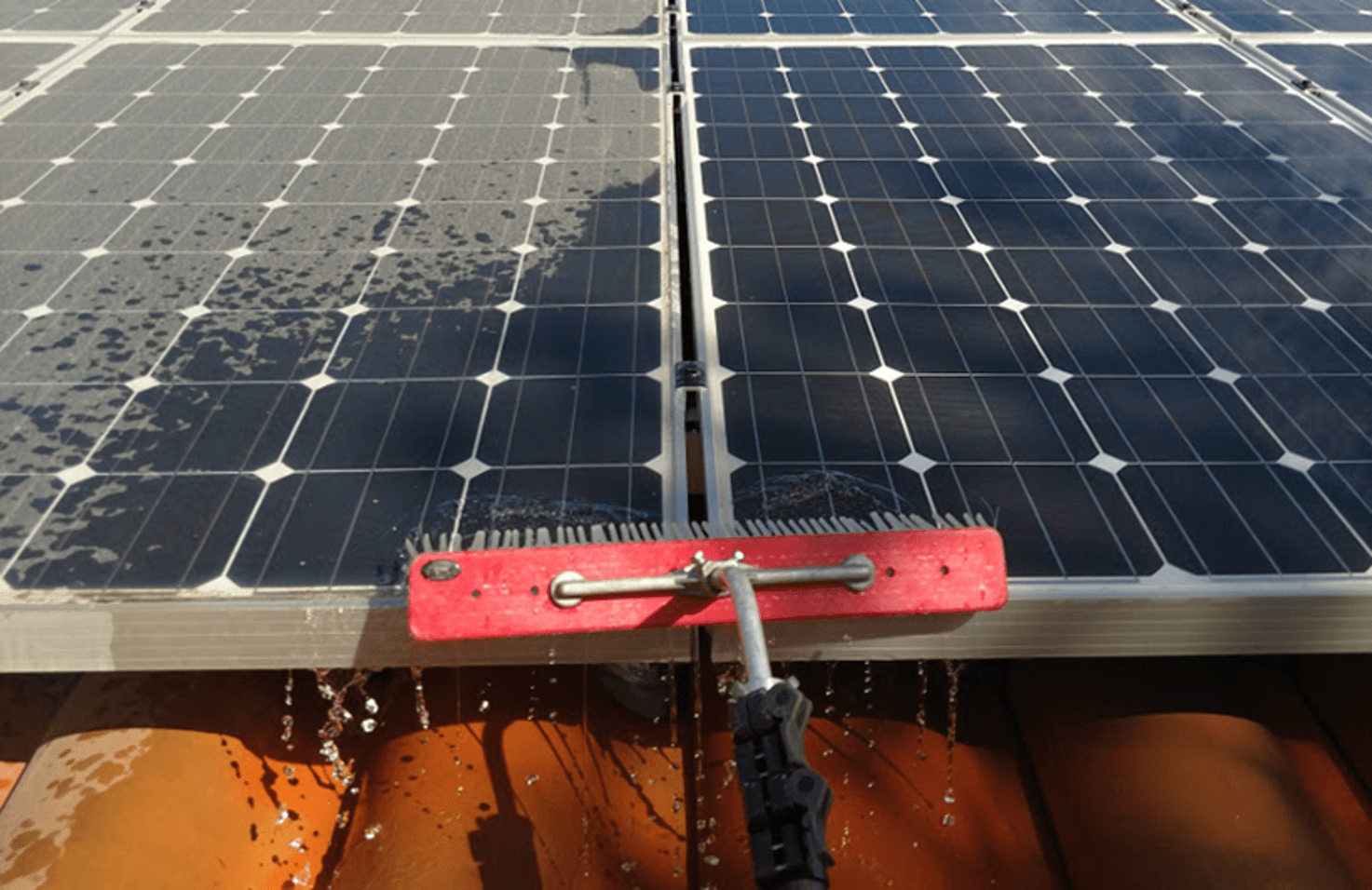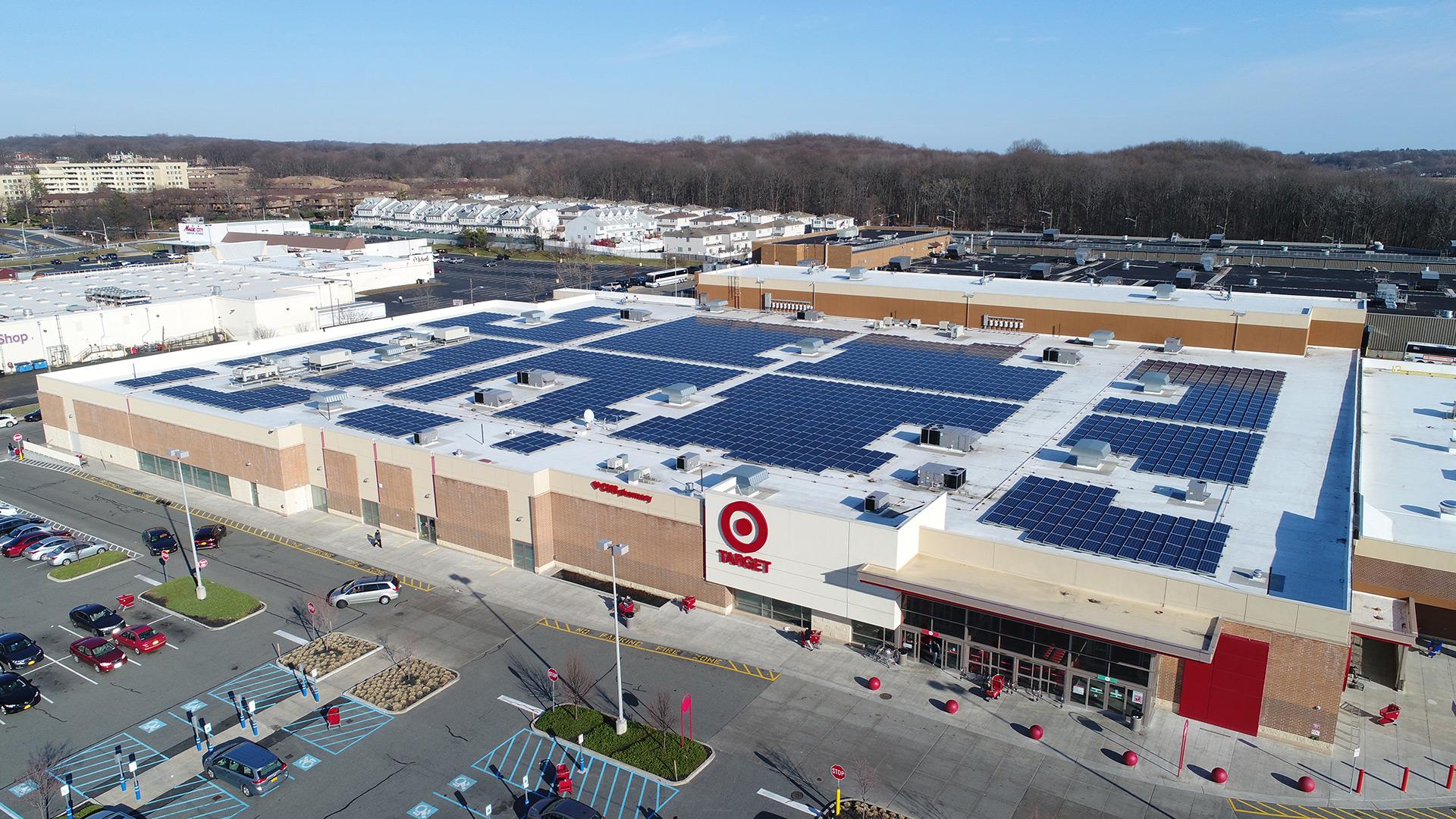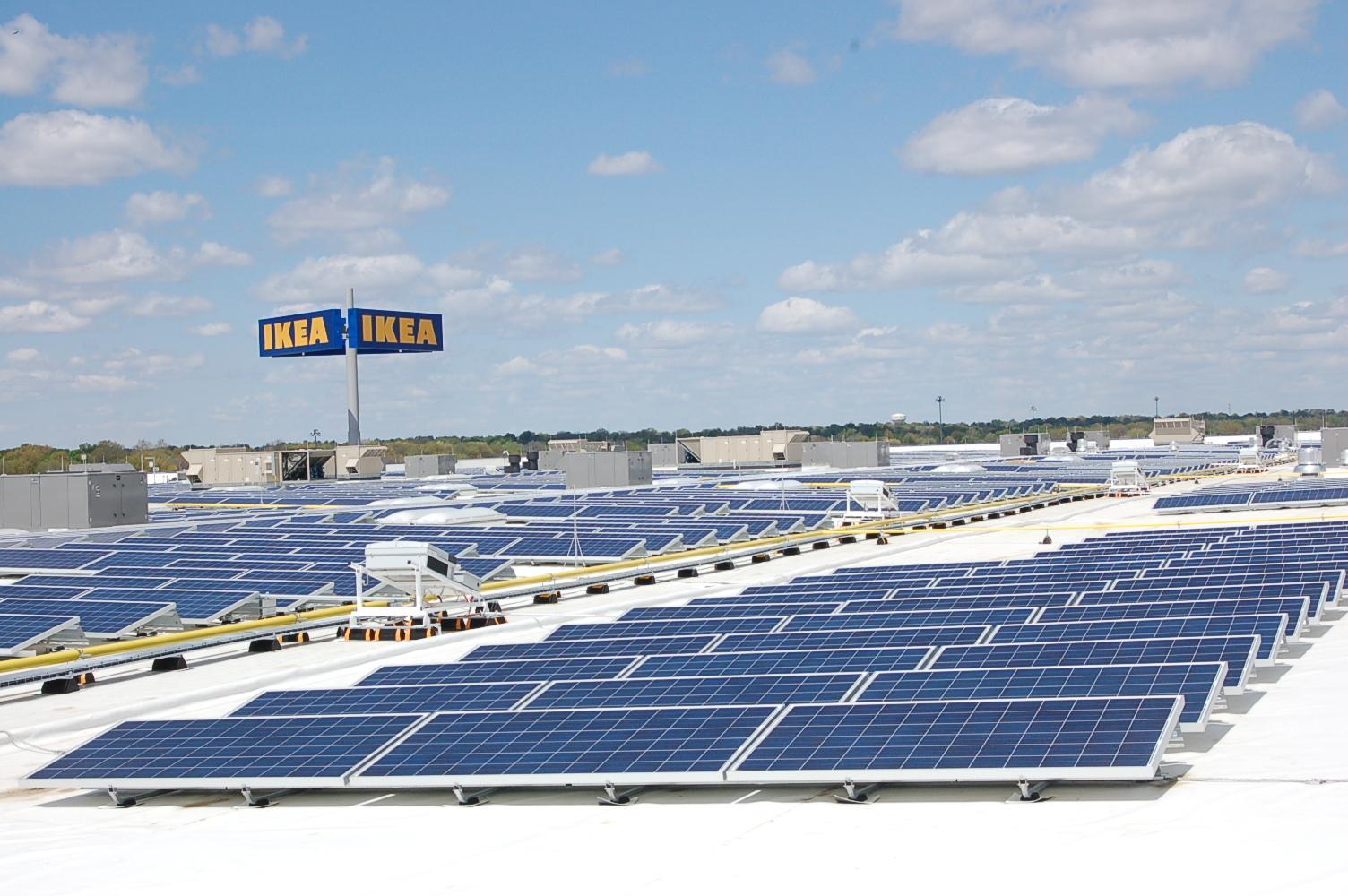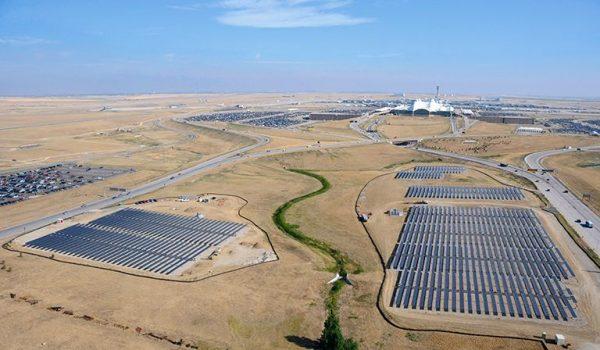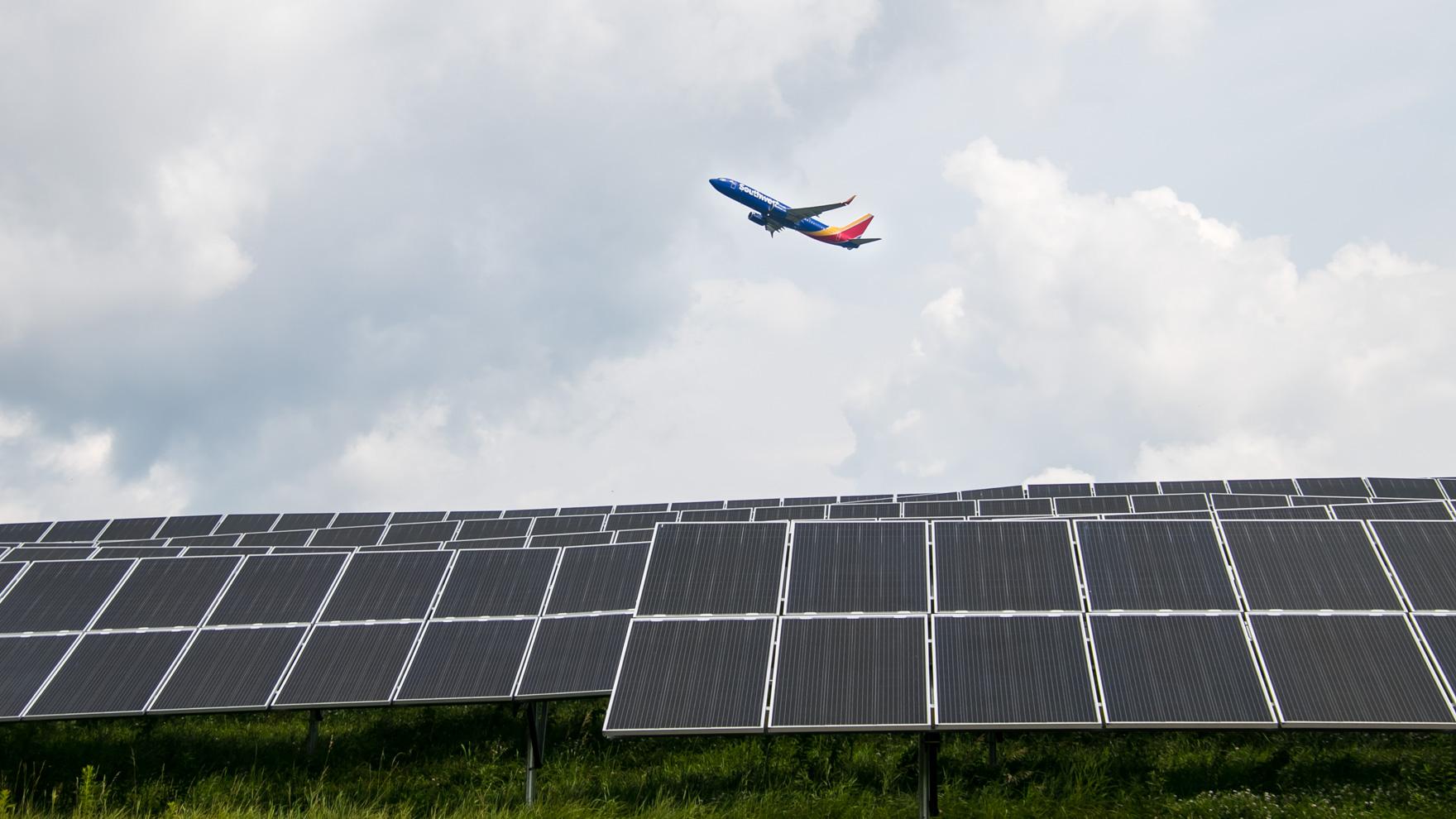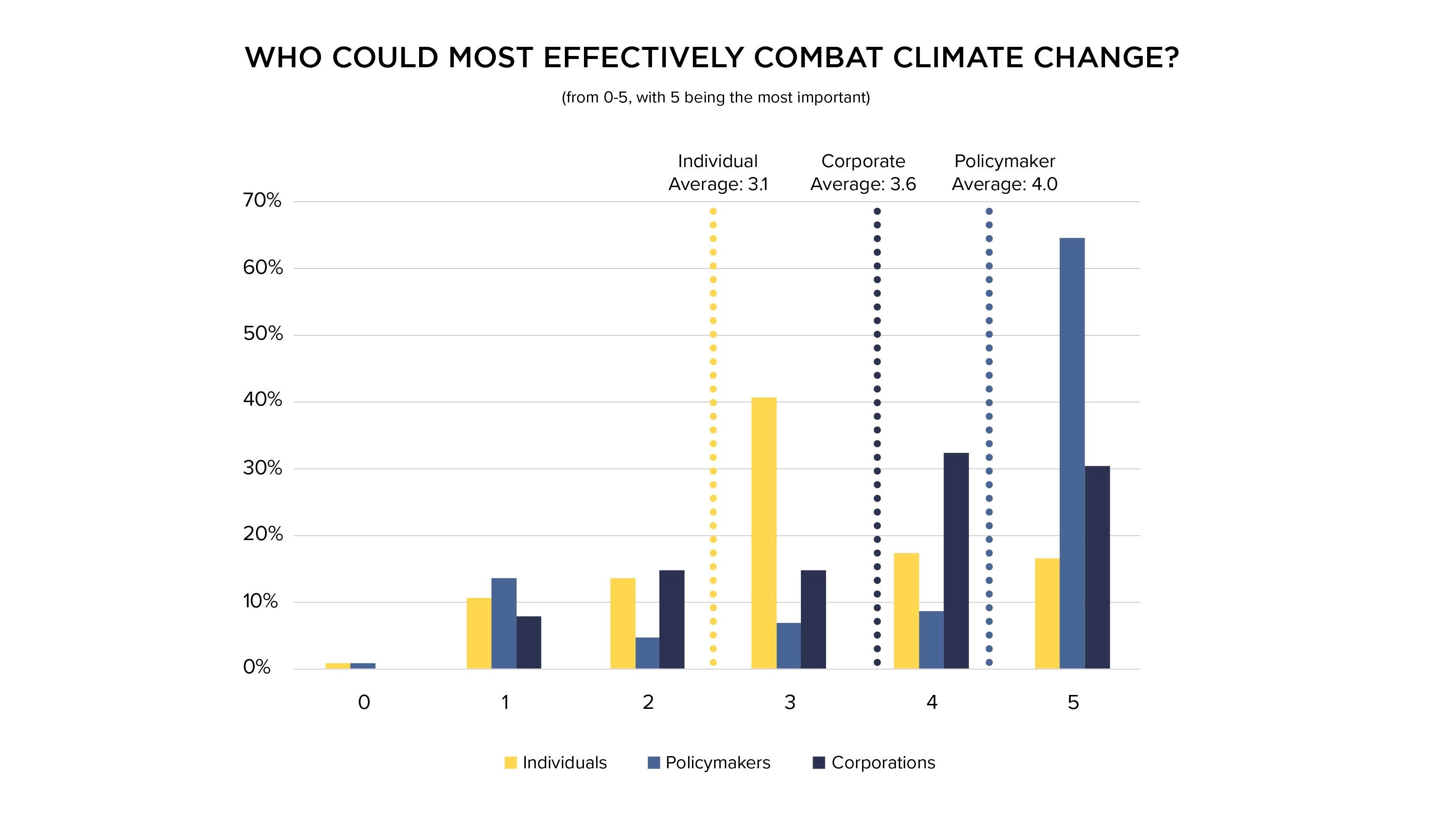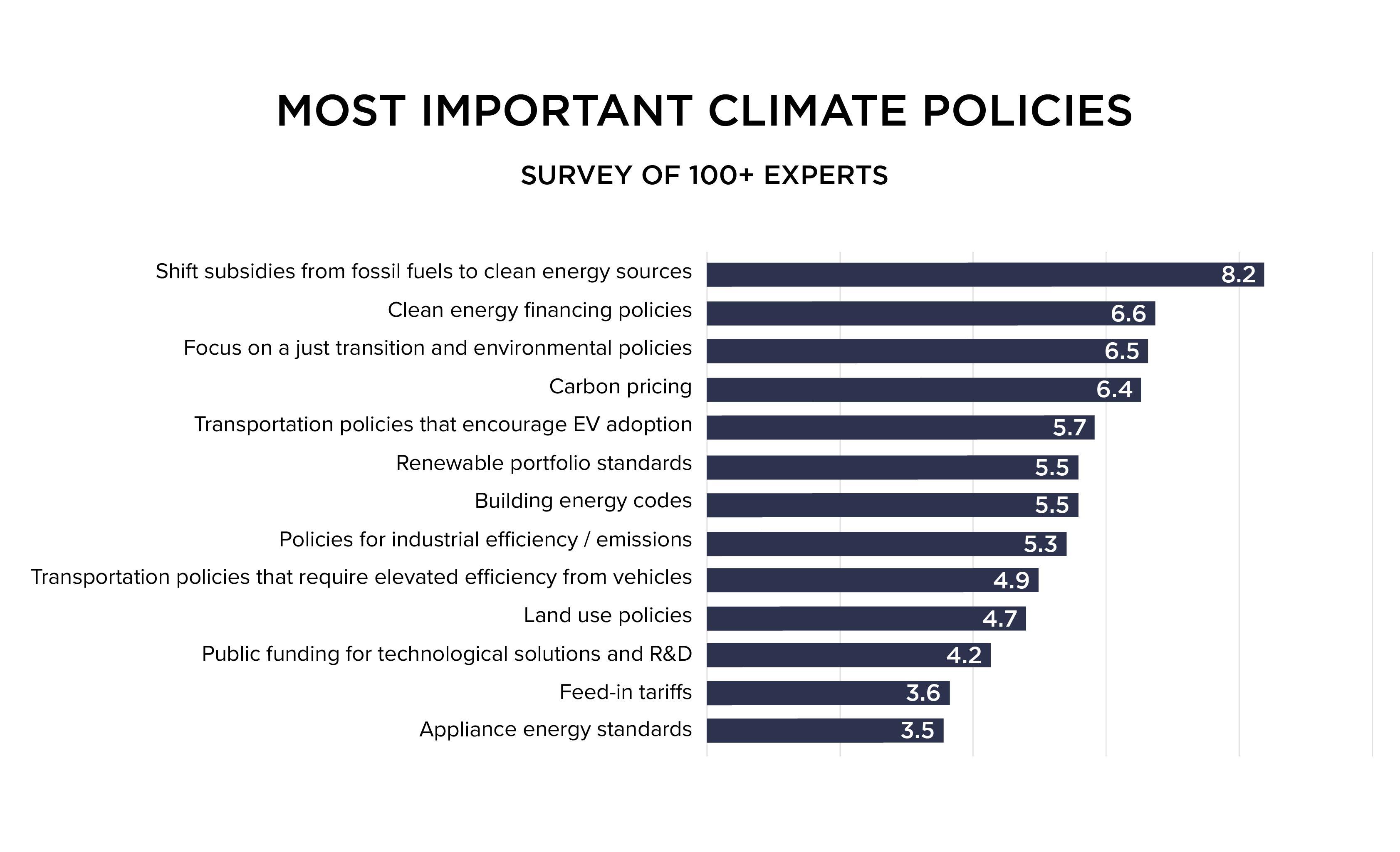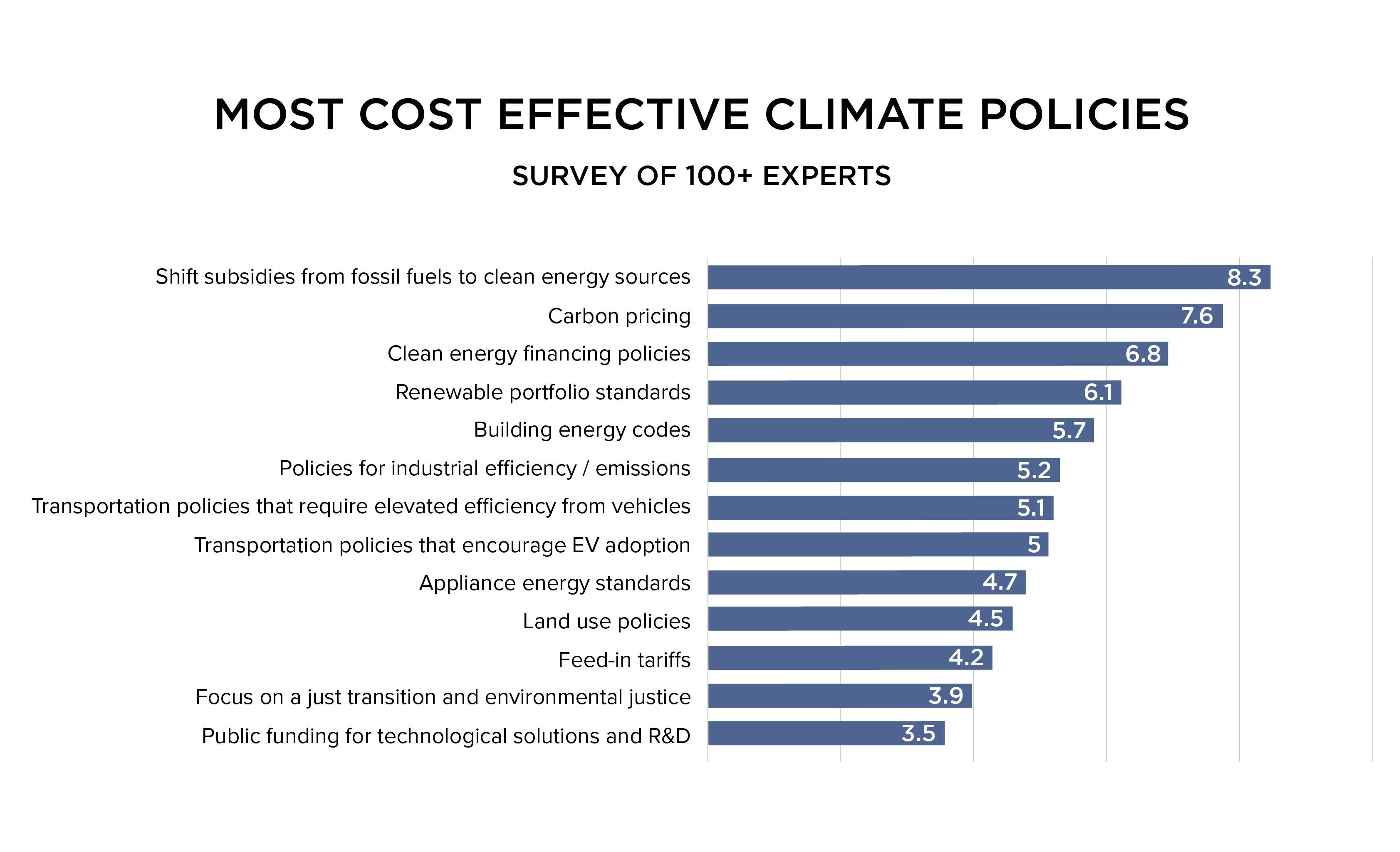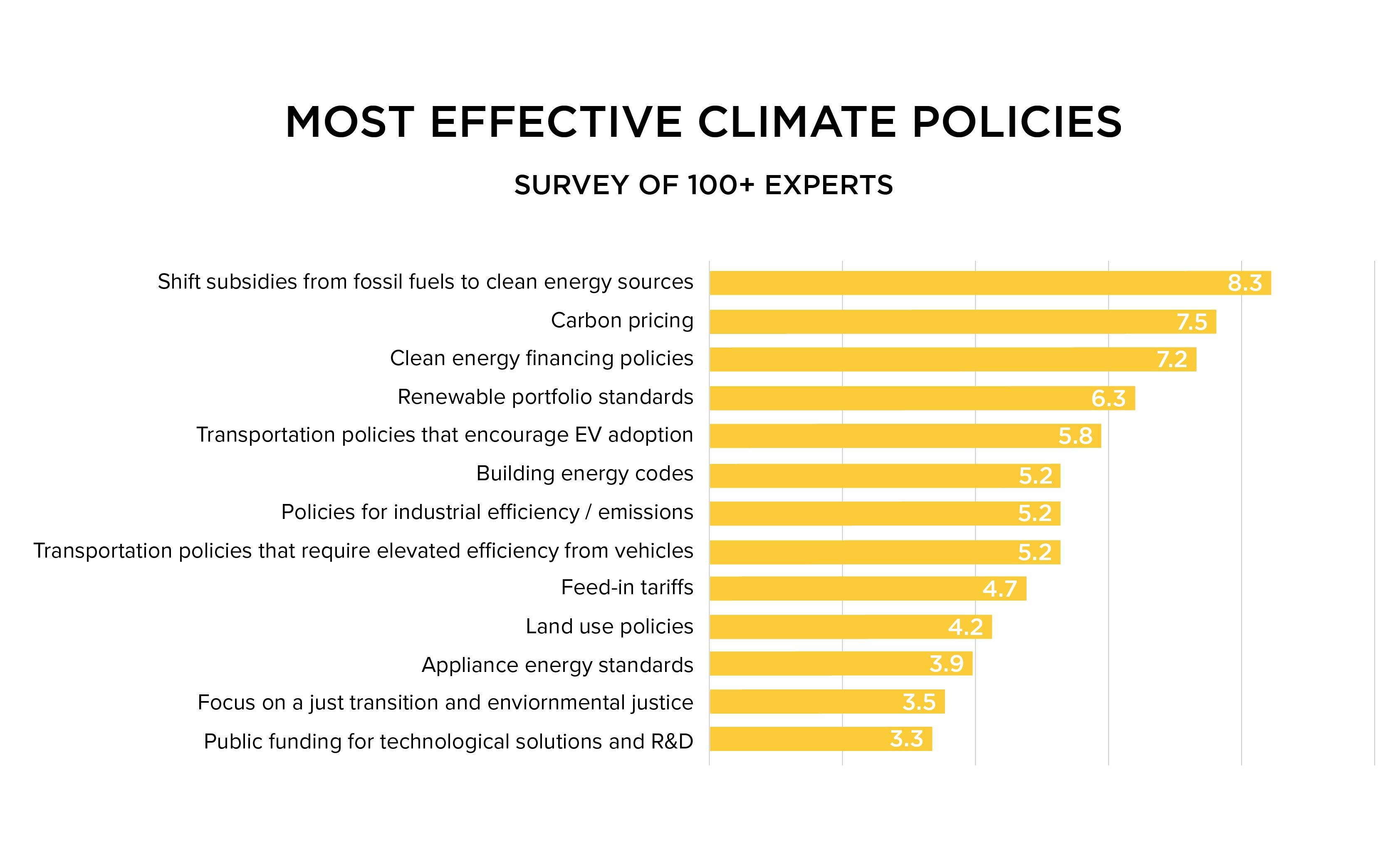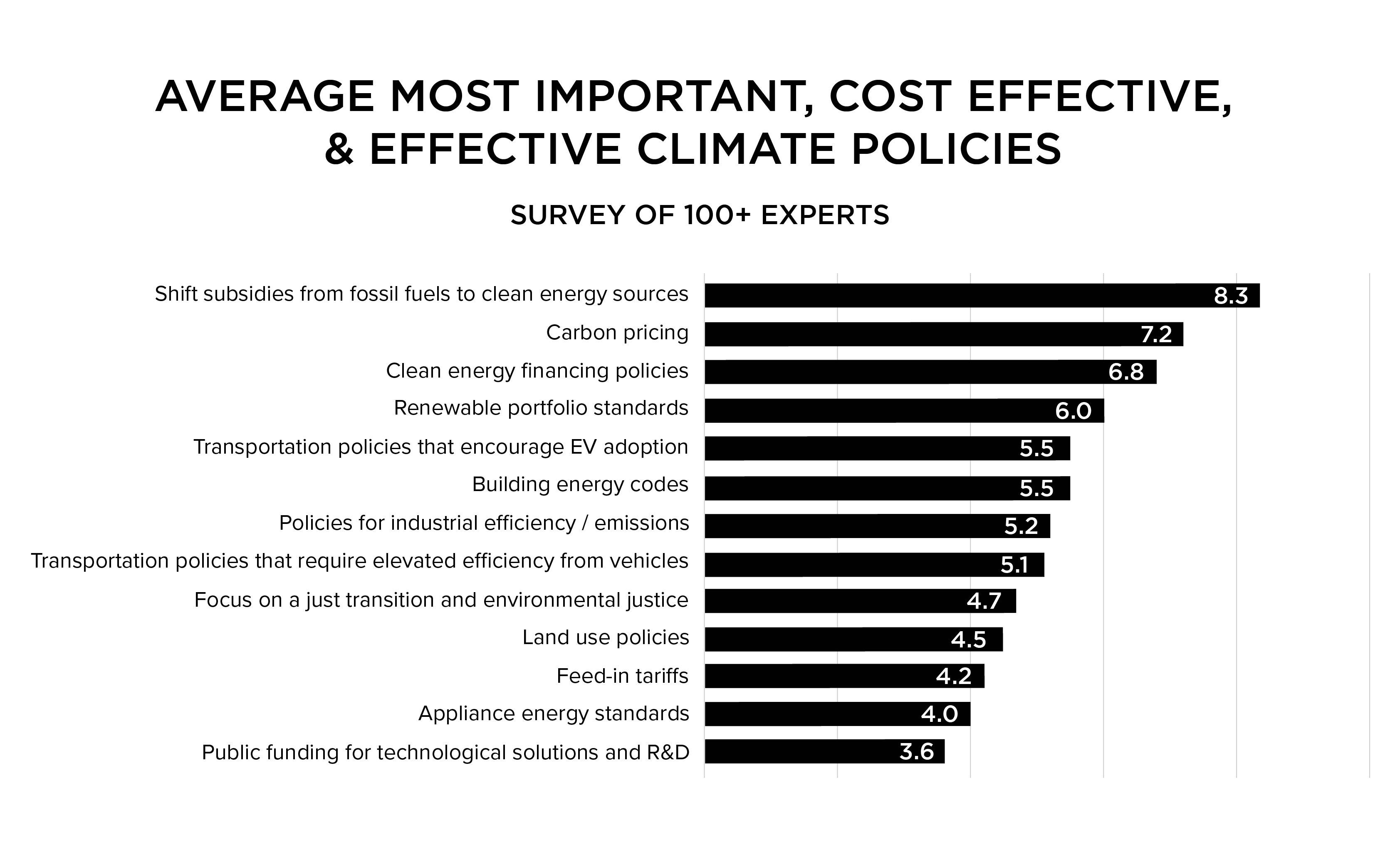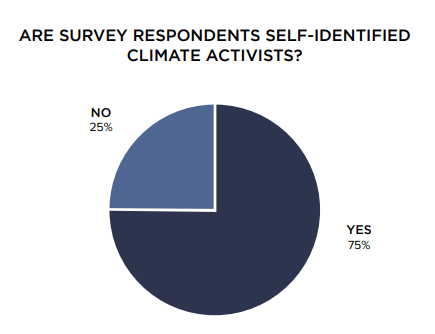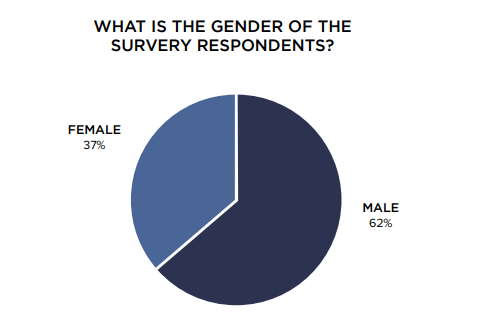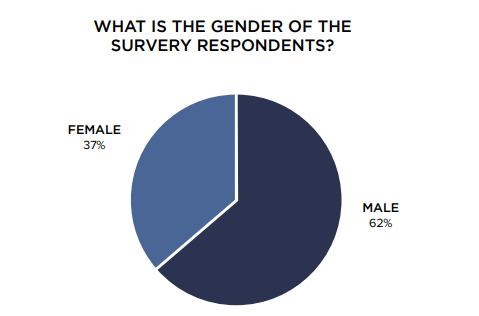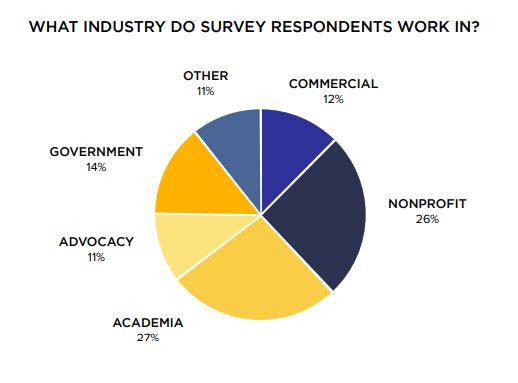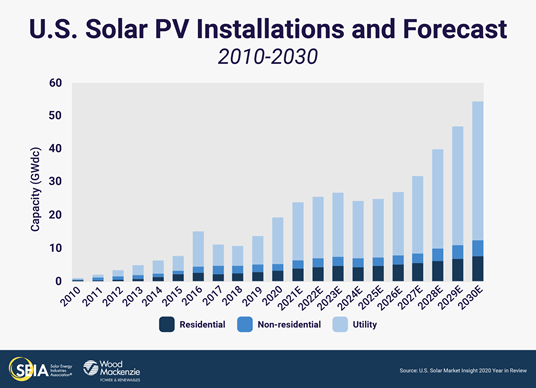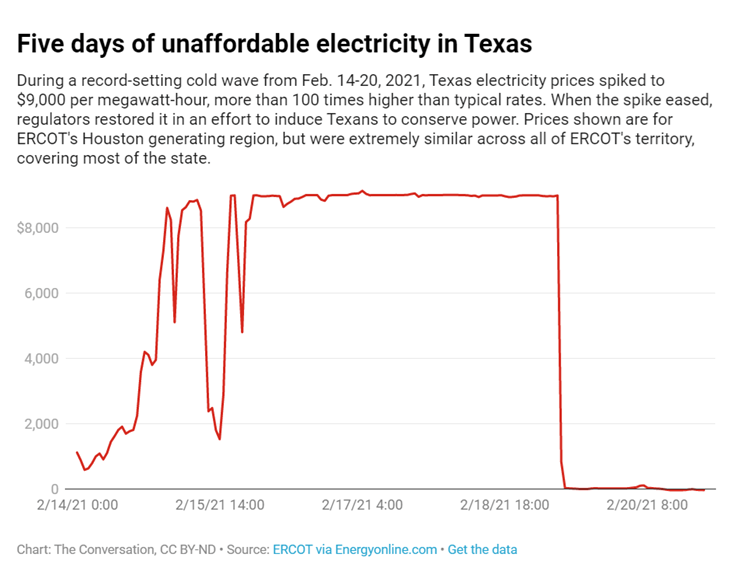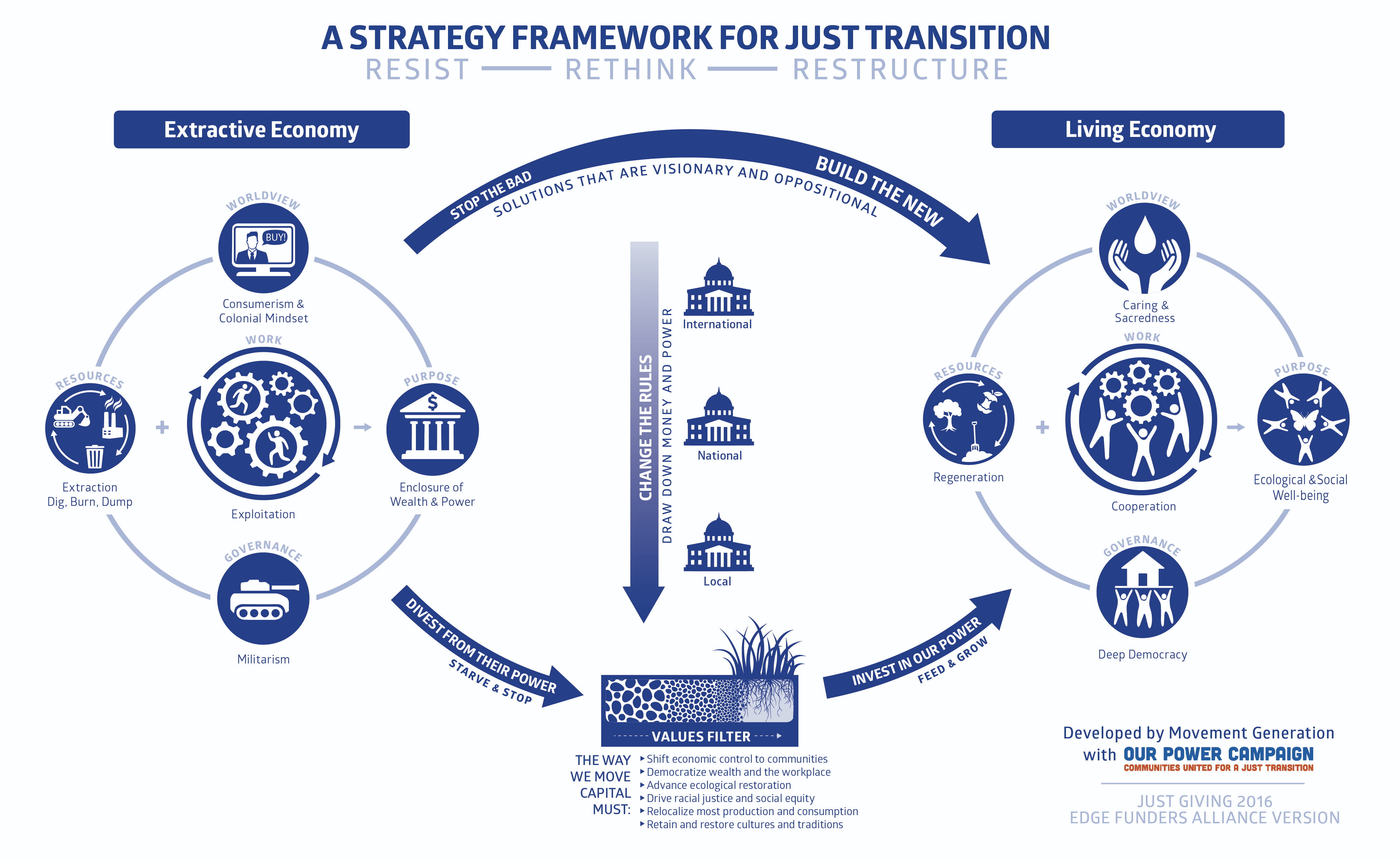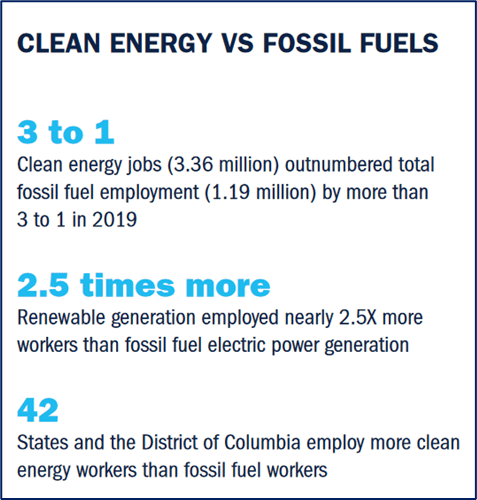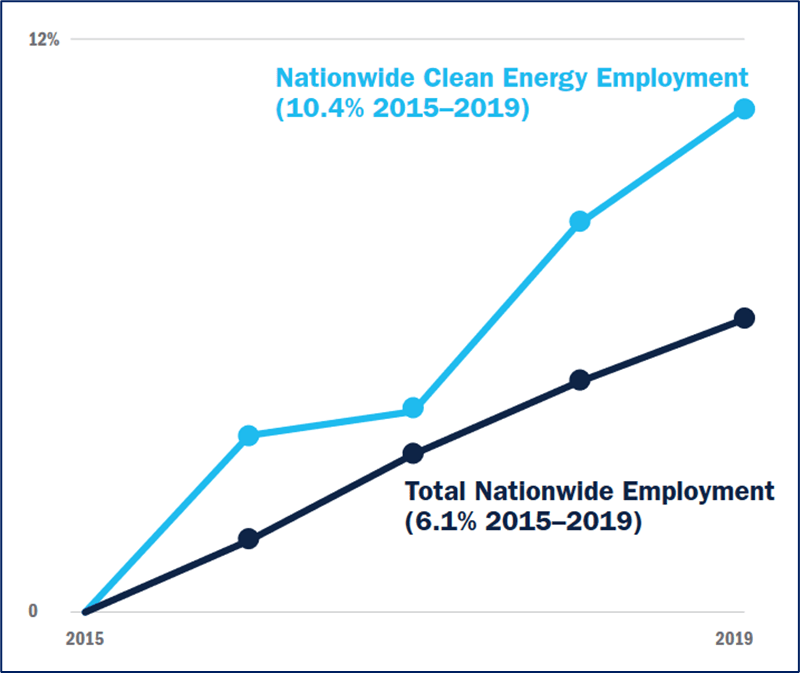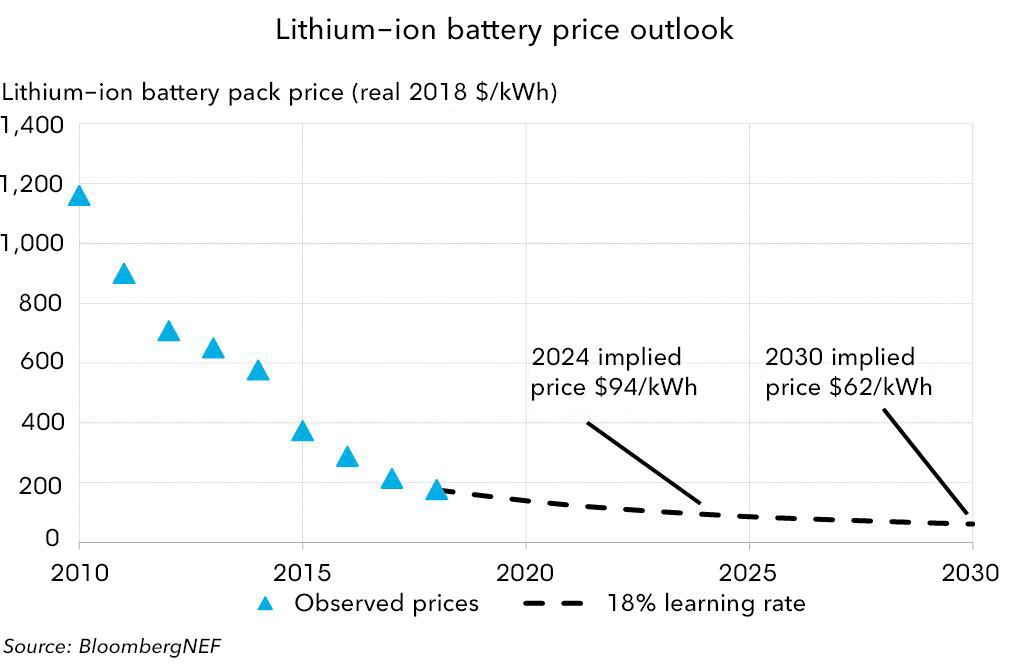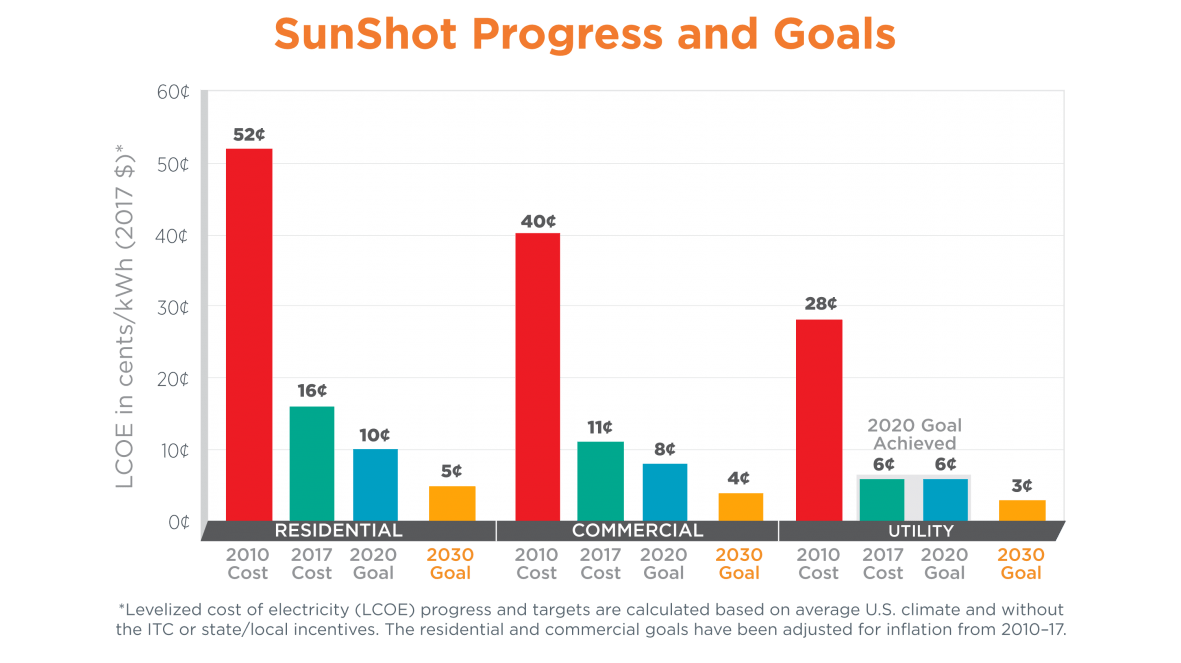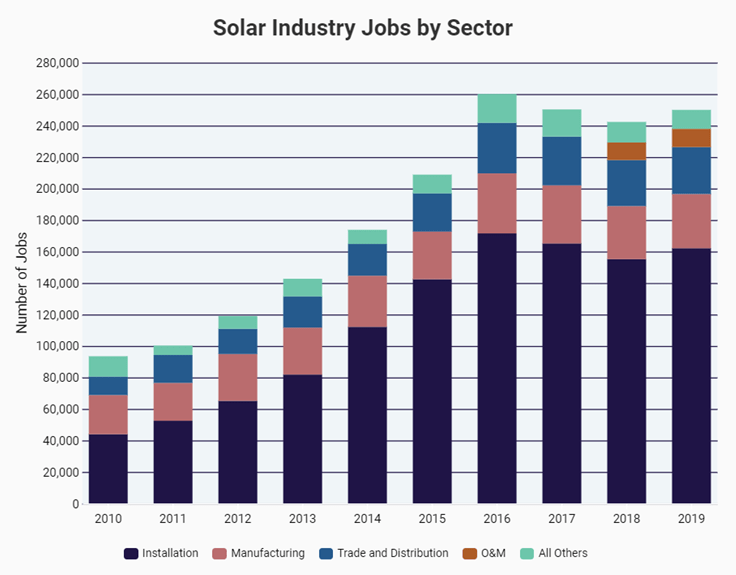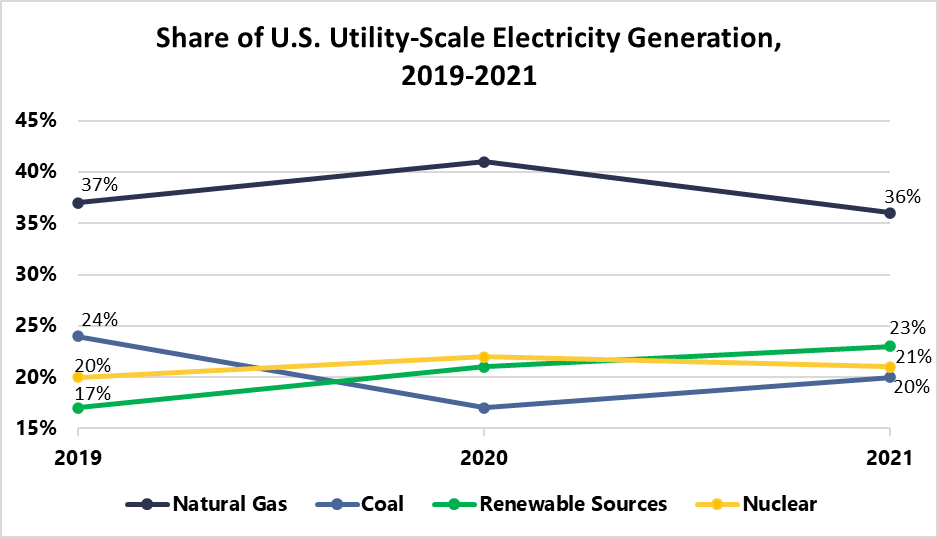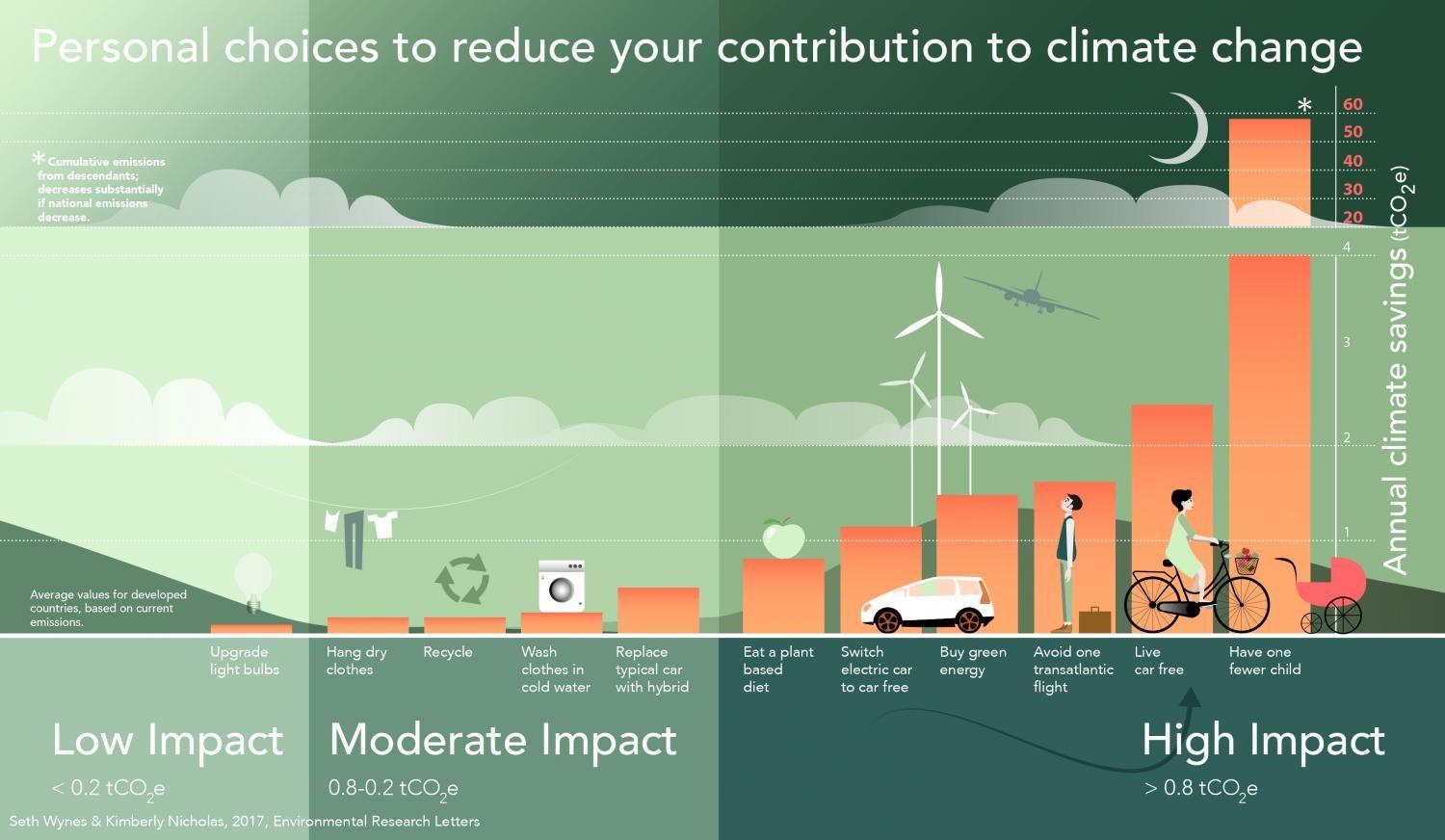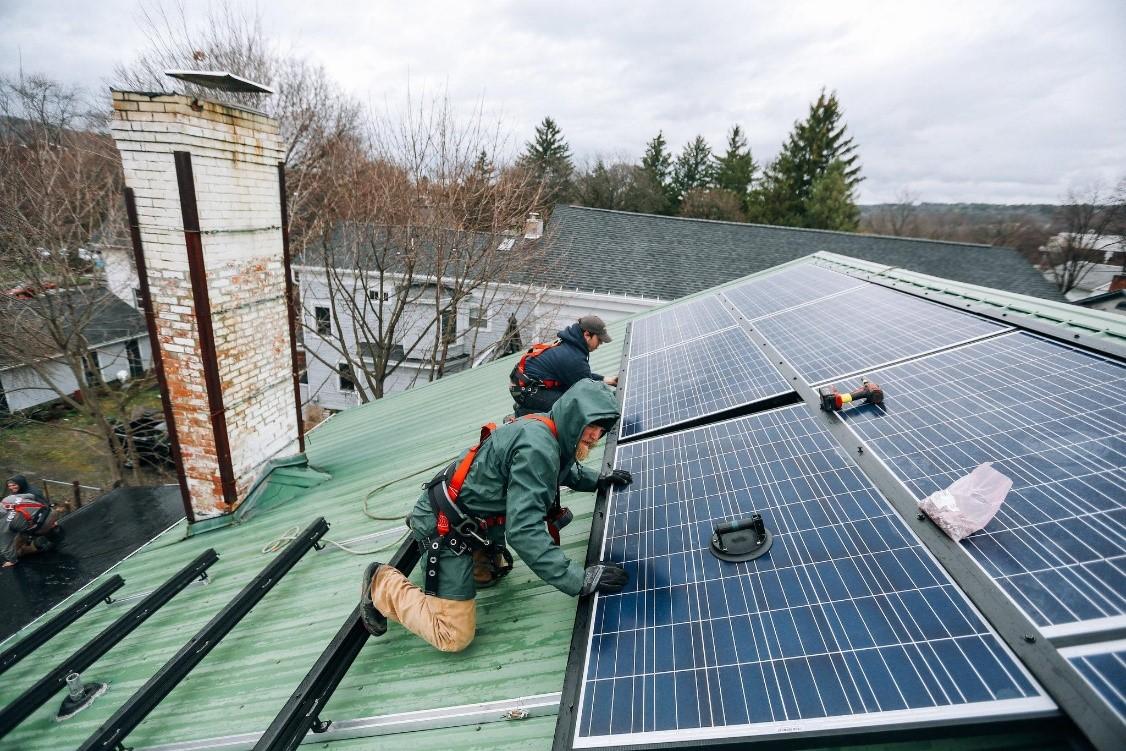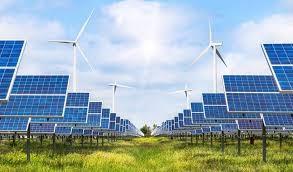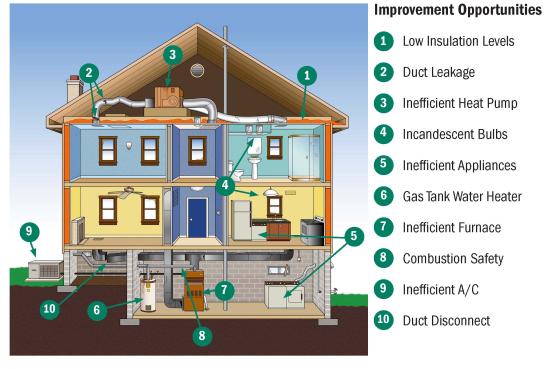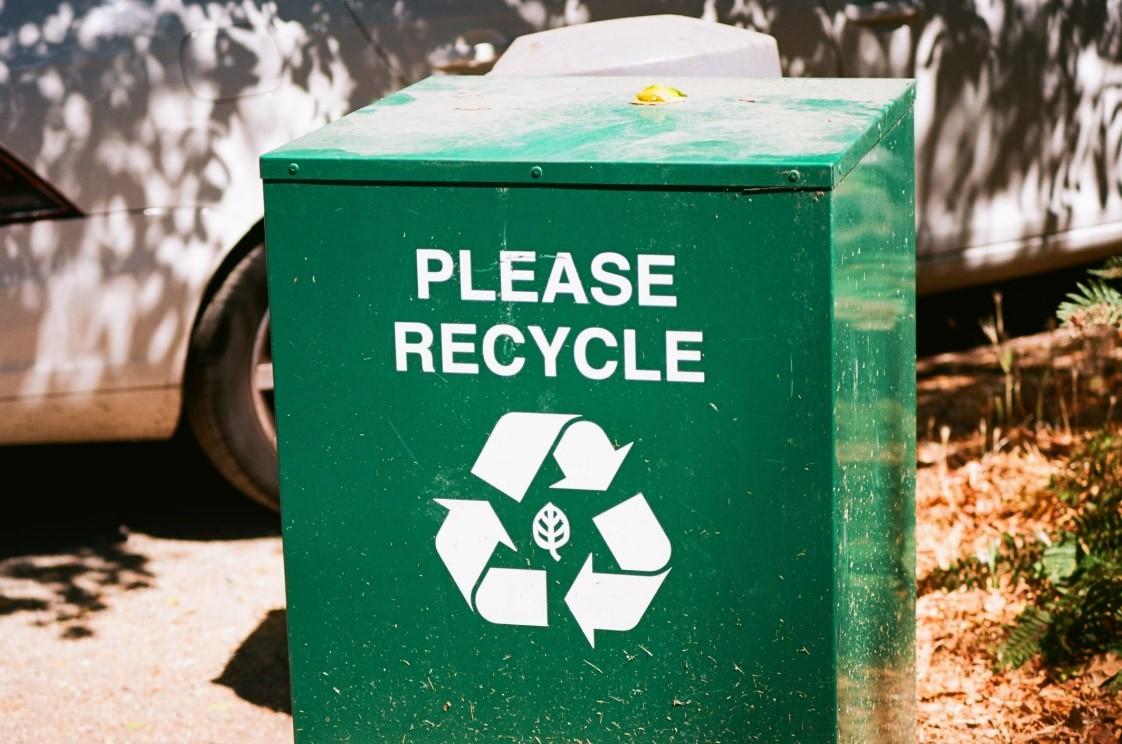The post Global Heat Wave Puts Solar Panels to the Test appeared first on Solar Tribune.
]]>
Too Much of a Good Thing
The dynamic between heat, sunlight, and solar panels can all seem counterintuitive. You would think that bright, sunny, long summer days would be most ideal for capturing solar energy. In actuality, excessive heat is a stressor that can erode solar PV panel efficiency.
Solar panels are manufactured and tested to function at their peak performance at a temperature of 25 °C (77 °F). Drops in energy efficiency start to happen once temps get above that 25°C mark. The slow erosion of PV efficiency is generally negligible on say an 88 °F degree summer day, but the compounding effect of efficiency losses can really weigh down performance on those especially hot 38+°C (100 °F) days.
The easiest way to explain the effect that ambient heat has on a solar panel’s performance is through temperature coefficients, which essentially indicate how much of a loss in efficiency will be incurred for every additional degree in surface temperature above 25 °C. For example, if the temperature coefficient of a solar panel is -0.5%, then for every 1°C rise, the panels maximum power will be reduced by 0.5%. So, on a 40 °C day, a solar panel’s output will be reduced by 7.5%.
July Heat Cripples Vulnerable Regions
A July heat wave ravaged countries across the world, but the effects were most pronounced in Western Europe where, unlike in the U.S., air conditioning is not a widespread household commodity. Temps above 38°C took hold across much of Europe, which in some cases was a nearly 15-degree deviation from historical summer temps that typically hover closer to 25°C.
London experienced its hottest day ever on July 19 when temps at Heathrow Airport hit 40.2 °C (104.4 °F). The hottest temps on the continent during the July heat wave were felt in the small town of Pinhão, Portugal were the high on July 14 reached a hard to comprehend 116.6 °F. The unprecedented heat and dry conditions in Europe during July led to widespread wildfires that wreaked havoc all over the continent. Over 5,400 people in Europe died during the month due to complications from the heat, many of whom were elderly people living in dwellings not equipped with A/C.
The U.S. was not spared from the historic heat wave that crippled Europe. According to an Axios article from July 25, 1,403 daily high-temperature records and 2,856 records for warmest overnight low temperature were set in the 30 days prior (Source: NOAA). Like in Europe, the blazing temps have fueled wildfires like the still burning Oak Fire in California, which has destroyed over 19,000 acres and forced the evacuation of over 6,000 people.
The once unfathomable record-breaking global temps that occurred in July are, of course, just the latest real-time manifestation of the climate crisis that we are all living in. UCLA climate scientist, Daniel Swain, recently made the following blunt assessment:
“Climate change is making extreme and unprecedented heat events both more intense and more common, pretty much universally throughout the world. Heat waves are probably the most underestimated type of potential disaster because they routinely kill a lot of people. And we just don’t hear about it because it doesn’t kill them in, to put it bluntly, sufficiently dramatic ways.”
The threat to human life and personal property are challenges wrought by the climate crisis, but the widespread threat to critical public infrastructure (like the electric grid) are of equal concern. In England, the oppressive heat compromised airport runways and buckled heat-sensitive train rails, leading to significant disruptions in travel. Meanwhile in Texas, the hottest month on record strained the state’s grid as previous demand records were broken 11 times in the month, including exceeding 80,000 MW for the first time ever.
The extreme temps can also pose similar issues to solar panel infrastructure. Although exceedingly rare, solar panel fires can occur. They are most often due to a design flaw, component defect, or faulty installation, but extreme heat is another contributing factor. A contained roof fire at a house in Quincy, MA in July was blamed on overheated solar panels, and just days ago – amidst prolonged 100+°F daily highs – a number of solar panels atop an office building in Dallas, TX caught fire.
Perhaps the most realistic fire threat involving solar panels is a wildfire-esque situation where dry vegetation underneath ground-mounted solar panels catches fire and spreads across a solar farm. This very situation has happened just in the past couple weeks amidst the July heat wave in Europe. An on-site grass fire affected a 30 MW solar farm in the Netherlands, and the same occurred at a 20 MW solar farm in the United Kingdom. Fire crews contained the fires in both instances and damage to the panels was minimal.
Overcoming the Heat Challenge
The solar industry is adapting to the growing climate challenges posed by a warming planet as numerous innovations are being developed to reduce the threat to efficiency that excessive heat can bring.
For one, the type of solar PV cell used matters. Monocrystalline and polycrystalline are the most common type of solar cells used on commercial panels, and they have the worst temperature coefficient of between -0.45% – 0.50%. The increasingly popular thin film solar cells have a temperature coefficient about half that at around -0.20%, while hybrid solar cells that combine both technologies sit roughly in the middle at -0.30%. A lot of concerns over heat-related efficiency loss can be alleviated as solar cell technology gets more sophisticated and market applications for thin film cells increase.
A range of active cooling technologies can also help solve the solar heat conundrum.
Companies like Sunbooster have harnessed an active cooling system that cools the surface of the panels by recycling rainwater and deploying it in an irrigation-like manner over top the panels during hot days.
Researchers at King Abdullah University of Science and Technology (KAUST) in Saudi Arabia and the Hong Kong Polytechnic University (PolyU) have also researched a hydrogel substance that can possibly have significant cooling capabilities. According to a PhysicsWorld article, “the researchers pressed a 1-cm-thick layer of the hydrogel against the underside of a standard silicon solar panel. When the temperature drops in the evening and overnight, the water absorbed by the material condenses to form liquid water. During the daytime, as the temperature increases, the heat from the PV panel causes the water to evaporate – a process that not only removes heat from the panel, but also regenerates the vapour sorbent so that the atmospheric water harvester (AWH) is ready for the next night-day cycle.” The technology is not yet fit for commercialization, but the researchers are optimistic about its long-term viability.
And in the “low hanging fruit” department, one of the easiest ways to cool solar panels is to combine them with their close cousin, the wind turbine. Wind turbines placed strategically on a solar farm act as massive fans, circulating cool air that flows over and around the ground-mounted panels below.
So much of the infrastructure relied on in the U.S. and elsewhere in the world was built during a time of fundamentally different assumptions about weather and climate. Clearly, the heat impacts felt last month are a reminder of how an ever-warming planet is changing this antiquated approach. The solar industry needs to harness promising innovations to adapt to new climate realities or run the risk of falling behind at a time when humankind needs it the most.
Cover Photo Source: LA Fire Department
The post Global Heat Wave Puts Solar Panels to the Test appeared first on Solar Tribune.
]]>The post The Rise of Agrivoltaics appeared first on Solar Tribune.
]]>
What is Agrivoltaics?
Agrivoltaics is a term used to describe the marriage between solar power generation and agricultural production. The U.S. Department of Energy defines it as “agricultural production, such as crop production, livestock grazing, and pollinator habitat that exist underneath solar panels and/or in between rows of solar panels.”
The concept underscores the multi-faceted life-giving qualities of the Sun. Plants and livestock not only benefit from sunlight in the traditional way, but sunlight absorbed by solar panels is used in part to support on-site agricultural production, such as powering irrigation systems and agricultural equipment.
Unlike typical utility-scale solar farms, agrivoltaics involves the solar panels being much higher off the ground and strategically “clustered” in ways that optimize sun/shade exposure for optimal crop production. Contrary to popular belief, few crops thrive on all-day sun exposure. Solar panels on the other hand thrive with lengthy sun exposure. Agrivoltaics allows for the best of both worlds.
The temperature moderating effects of the elevated solar panels also have crop production benefits. Air and land underneath the panels is cooler in the summer, which helps insulate crops from drought impacts as moisture is more easily retained in the soil. The elevated panels also benefit from the cooling effects of having ample air flow above and below them, since solar panels lose efficiency when their surface temperatures get too hot.
A 2019 study by the U.S. Department of Energy’s National Renewable Energy Laboratory’s (NREL) documented numerous food production, water savings, and energy production benefits of agrivoltaics. The study found that solar panels were kept 16°F cooler by evaporation from the crops below, which was enough to increase energy production by 2%. The crops below the solar panels that were tested were found to be 100%-300% more productive, depending on the species, while solar panel shade cover reduced irrigation-water use by 15% and overall water consumption by over 150%. Pretty impressive numbers all around.
The wide-ranging benefits of agrivoltaics ultimately mean more cash in the pocket of farmers. Not only do crop yields increase and maintenance costs decrease, but they are often able to benefit from dual income streams from a solar land lease arrangement and improved crop production.
Solar Sheep
Solar grazing is a phenomenon that few could have conceived of once upon a time, but now, the practice is routinely employed to the collective benefit of animal, farmer, and solar operator. According to the aptly named American Solar Grazing Association (ASGA), the U.S. has over 15,000 acres of sheep-maintained solar sites.
Once you can get past the odd visual, relying on sheep to graze on the land where massive solar arrays sit is a no-brainer. Grazing sheep munch on grasses and weeds, which helps to optimize solar panel efficiency by removing shade threats and keeping the panels otherwise unobstructed. This reduces the need for traditional mowing and landscaping, which can help to prevent unwanted structural damage to the solar arrays and helps to keep stray grass clippings and dirt from soiling the surface of the panels. We also implicitly associate solar energy systems with carbon reduction and environmental benefits, so ditching gas-powered lawnmowers and chemical herbicides for grazing sheep is a meaningful shift that can amplify the broader benefits of solar energy production.
For their troubles, the sheep get a comfortable supply of food to munch on and ample protection from the sun and weather elements underneath the solar panels.
The cost-savings for all parties involved is another reason to like the solar-sheep arrangement. The solar operator no longer has to worry about maintenance fees associated with traditional landscaping and potential damages from mowing mishaps or overgrown vegetation. Meanwhile, the sheep farmer receives a steady income stream for the use of their sheep without sacrificing meat, dairy, or wool production capabilities. According to the ASGA, solar operators typically pay farmers $250-$750 per year for an acre of land to be grazed.
Powering Pollinators
Incorporating pollinator-friendly habitats into solar farm sites is another aspect of the agrivoltaics movement that has far-ranging benefits.
The decline in pollinator populations – especially among bees – is well-documented. Habitat loss, climate change impacts, and insecticide use are some of the main challenges that pollinators continually face these days.
By incorporating native plant habitats on solar sites, great progress can be made to support critical pollinator populations. Other associated benefits like reducing erosion and runoff issues, and promoting overall biodiversity are an added bonus. When accompanied with pollinator-friendly vegetation management practices, like eliminating insecticide use, solar sites can help to foster pollinator activity on-site and in the surrounding area. The participating farmer and neighboring agricultural sites stand to benefit from all of the increased pollinator activity given the obvious role that pollination plays in crop production.
The Environmental Protection Agency (EPA) has general guidelines to protect pollinators from harmful insecticides, and there are no shortage of pollinator-friendly organizations out there that promote best practices in supporting pollinators in your home garden, school, business, etc. Many states are now implementing their own pollinator-friendly solar farm standards to incentivize pollinator habitats specifically on solar farm developments. Minnesota was the first state to do just that back in 2016, when then Governor Mark Dayton signed the Pollinator Friendly Solar Act into law. This first-of-its-kind legislation outlined voluntary standards and benchmarks that participating solar sites can meet in order to achieve recognition as a “pollinator-friendly” solar location. Several other states have followed Minnesota’s lead and developed their own voluntary standards to certify solar sites as pollinator-friendly.
We’ve seen consumers’ pro-renewable preferences influence all sorts of industries and the honey industry is no different. Not only are pollinator-friendly solar sites becoming more common as a way to benefit farmers and vulnerable pollinator populations, but honey producers are also realizing the appeal of marketing honey harvested on solar farms. Companies like Minnesota-based Bare Honey are embracing this promising market opportunity and showcasing the multiple layers of economic and environmental benefits of solar-based honey production.
The cross-cutting benefits of solar energy never cease to amaze us. The emerging prominence of agrivoltaics is but the latest manifestation of the broad benefits associated with solar energy. Not only can solar energy lead the way to powering the world in a more sustainable way, but it can totally transform the way that we produce food. Imagine a future where acres of farmland is covered with solar panels and high yielding crops; grazing sheep and abundant honey producers. Global de-carbonization goals will require wholesale changes across many industries. The ongoing innovations in the agriculture industry and the emergence of agrivoltaics are a great example of how solar energy will continue to shape (and improve) the future.
Cover Photo Source: Enel Green Power
The post The Rise of Agrivoltaics appeared first on Solar Tribune.
]]>The post Cleaning Innovations Key to Solar PV Efficiency appeared first on Solar Tribune.
]]>
The Dust Problem
Spring is a dreadful time of year for many with seasonal allergies, as pollen begins to permeate the air and aggravate sensitive nasal passageways. Pollen, dust, and other particulate are a similar pain for solar panels. The National Renewables Energy Laboratory (NREL) estimates that dust and grime accumulated on a solar panel can lead to 7% energy loss annually in the United States and up to as high as 50% in the excessively dusty Middle East.
This issue can generally be solved after a good rainstorm, but those events are obviously sporadic and unpredictable. Overnight cooling combined with morning dew and surface heating as the day goes on can also lead to a process called cementation where the grime hardens on the panels and is nearly impossible for a regular rain shower to remove.
How Are Solar Panels Typically Cleaned?
Traditional solar panel cleaning methods vary depending on whether we’re talking about a ground-mounted solar array or one affixed to a house, but regardless, the process generally involves water and a brush/sponge/squeegee. The process doesn’t differ meaningfully from washing your own car. Just like washing your car, great care needs to be taken to not scratch the surface glass of the panel as any surface damage can reduce the panel’s efficiency.
The major flaw with this traditional cleaning method is that it requires the use of water. For residential users this results in added cost in the form of higher water bills, but perhaps more importantly, relying on water to clean solar panels is incongruent with the broader sustainability goals of using solar energy in the first place. It is estimated that 10 billion gallons of water is used per year to clean the world’s solar panels. To put that in perspective, that amount of water could satisfy the drinking needs of up to 2 million people. Clearly, the massive water consumption footprint associated with cleaning of solar panels does not represent a long-term solution for the industry.
Solar Panel Cleaning Robots
Establishing a waterless fix to the soiled solar panel conundrum has inspired a burgeoning niche market within the solar industry – solar cleaning robots.
Art Robotics, a fledgling Belgian startup, is one such company involved in the space. The company uses a drone to deliver a small slender robot (named HELIOS) to roof-affixed solar panels which clean the panel surface using vacuuming technology. The contraption is basically a Roomba for your solar panels. The product is pitched as a cleaning service that you would sign up for as needed or in regular intervals.
SolarCleano is one of the more well-known providers of robots for cleaning solar panels, although many of their robots use water. Their SolarCleano B1 robot is one exception. This gigantic solar cleaning system is designed for use on ground-mounted utility scale solar farms. The fully autonomous system consists of a robot on wheels equipped with a large rotating bristle brush that “drives” around cleaning the surface of the solar panels.
While the waterless brush-based robots help to solve the excessive water challenge, there are concerns that over time the constant scrubbing can lead to scaring of the solar panels, which ultimately leads to a reduction in solar efficiency and in useful life.
MIT’s Static Electricity Solution
Existing solutions to cleaning solar panels are better than nothing, but far from ideal. They are either labor intensive and waste a lot of water (manual brush system) or susceptible to damaging the panels with excessive use (robotic dry brushing). Leave it to the bright minds at MIT to stumble upon a breakthrough technology that can totally change how we approach the cleaning of solar panels.
Earlier this month, researchers at MIT released a study highlighting a solar panel cleaning approach rooted in the power of static electricity. A small electrode that hovers above the solar panel creates an electrostatic charge that repels dust particles off the surface of the panel. The process is less effective with high humidity or moisture (ie, morning dew) on the panels, so its use in desert-like arid environments is particularly promising.
The technology is still very much in the lab prototype phase, but its potential application for commercial use seems promising. Such a simple solution could be a boon to ramping up solar energy production in arid climates where sun is abundant but where dust storms threaten the long-term feasibility of solar energy applications. The American Southwest, Sahara Desert, and Middle East immediately come to mind.
Innovations in the solar panel itself has helped drive down costs and drive-up adoptability over recent decades. The potential breakthrough solar cleaning innovation being pursued by MIT researchers may further drive up global solar capacity as the door to solar energy adoption and long-term viability opens up in new regions across the world.
Cover Photo Source: MIT
The post Cleaning Innovations Key to Solar PV Efficiency appeared first on Solar Tribune.
]]>The post Putin’s War Accelerates Clean Energy Push appeared first on Solar Tribune.
]]>
Oil & Gas Key to Putin’s War Politics
It can hardly be a coincidence that every military excursion that Russia has launched on Putin’s watch has happened during stretches of all-time high oil prices. During the August 2008 war in Georgia, crude oil prices were just coming off an historic high of almost $140/barrel (global benchmark crude Brent) set two months prior. Oil prices were similarly high in February 2014 when Russia seized Crimea ($108.21/barrel). Putin’s invasion of Ukraine came as the price for crude oil was over $90/barrel – a seven-year high.
Clearly, Putin uses record high oil prices to fill Russia’s coffers, fund the country’s war machine, and blunt the blow of international sanctions. Putin’s third attempt at such a strategy, however, is likely to be his most fatal.
Russia’s status as one of the most fossil fuels-rich countries in the world has allowed the country to maintain geo-political influence even as growing authoritarian tendencies in the country turned off many global democracies.
Many of the world’s global powers, like the U.S. and much of Western Europe, have performed an awkward dance with Putin’s Russia for years. On the one hand, these countries assume a confrontational posture on the global stage, criticizing Putin’s anti-democratic instincts, all while they maintain reliance on Russia’s oil and gas products behind the scenes. Those days are likely to change significantly, and Russia is poised to be the biggest loser as the latest upheaval to global energy politics reshuffles the world order. The Biden Administration took the unprecedented step recently to ban all Russian oil imports in what is perhaps the most severe sanction the United States has placed on Russia to-date. The NY Times’ ominous yet fitting headline about the move, The Future Turns Dark for Russia’s Oil Industry, accurately describes the bleak future that Russia now faces.
Europe Pledges an Even Greener Future
The fallout from Russia’s invasion of Ukraine has been unprecedented. European, American, and other democratic voices across the world have coalesced around a global strategy to send military support to Ukraine and isolate Russia through severe economic sanctions.
In the early days of the assault on Ukraine, German Chancellor Olaf Scholz announced the suspension of the Nord Stream 2 natural gas pipeline tied to Russian energy company Gazprom. President Biden also slapped sanctions specifically on the Nord Stream 2 AG company that is in charge of building the pipeline. This comes as countries like the United Kingdom, Canada, and others cascade sanctions on Russian energy giants Gazprom and Rosneft.
These moves, while good for the overall global push to adopt more renewables, leave Germany and other European countries in a tough spot. Germany in particular closed the door on nuclear power after the 2011 Fukushima disaster and pledged in 2019 to shutter coal-fired power plants by 2038. Reversing course on either at this juncture would be politically difficult, but reporting indicates that Germany is at least considering extending their coal phase-out plans.
To say that Germany has a complicated relationship with Russian gas would be quite the understatement. The country relies on Russia for two-thirds of its natural gas supply and one-third of its oil. Germany has almost no short-term leverage over Russia when it comes to severing these long-standing ties. That’s perhaps why Germany and other EU countries are all but slamming the door on any outright ban on Russian oil imports in the near future.
The short-term reality aside, the energy politics in Germany and across Europe have changed dramatically in favor of a greener future. German officials in particular are now more motivated than ever to fully embrace renewables back home. Germany recently announced plans to meet all of the country’s energy needs from renewable sources by 2035, an accelerated timeline from the previously set date of 2040.
Climate Change as National Security Threat
The predicament that Germany finds itself in is a perfect example of the growing ties between climate change and national security. This reality was underscored recently by a Ukrainian climate scientist, Dr. Svitlana Krakovska, at a UN climate meeting where she called out the common denominator for the worrisome near-term and long-term future her people face. Said Krakovska:
“Human-induced climate change and the war on Ukraine have the same roots—fossil fuels—and our dependence on them.”
It is no coincidence that recent wars and hostile military actions have been concentrated in and around major fossil fuel-producing countries. Iraq, Venezuela, Saudi Arabia, and Russia all come to mind. The more that the developed world can wean itself off of tainted global oil produced from hostile countries the better.
Just like Germany, the United States is reassessing its own predicament over global oil reliance. Amid sky rocketing gas prices, the Biden Administration is doing the once unthinkable; considering reaching out to Saudi Arabia to tap more of its oil reserves and considering the relaxing of oil sanctions previously placed on Venezuela. To put it mildly, Saudi Arabia and Venezuela aren’t exactly saints on the global peacekeeping front. The fact that the United States is so reliant on fossil fuels from such bellicose countries to meet its energy needs is highly problematic to say the least.
Combating climate change has long been positioned in moral terms, and increasingly, in economic terms as the costs of renewables have dramatically fallen in recent decades. The ongoing crisis in Ukraine is now forcing everyone to view the problem through the lens of sovereignty. It is not only the climate that is at stake, but the very nature of sovereignty for much of Europe is at stake as well. The best way to diminish the geo-political influence of petro-aggressor states like Russia is to commit to an energy policy that puts renewables at the center of a plan for energy sovereignty.
Cover Photo Source: World Economic Forum
The post Putin’s War Accelerates Clean Energy Push appeared first on Solar Tribune.
]]>The post Big Box Retailers Key to U.S. Solar Ambitions appeared first on Solar Tribune.
]]>
Big Rooftops = Big Solar Potential
A report recently released by the non-profit Environment America underscores just how immense the solar generation potential is for America’s big box retailers.
Regardless of where you live in the U.S., big box stores likely feel like a ubiquitous fixture of your landscape. According to Environment America’s report, the nation’s big box retail stores, supercenters, large grocery stores, and malls collectively boast 7.2 billion square feet of cumulative rooftop space. In solar capacity terms, these rooftops have the potential of generating a jaw-dropping 84.4 terawatt-hours (TWh) of solar electricity each year. This is roughly equivalent to the amount of electricity used to power 8 million average U.S. homes. This immense solar potential touches almost every state in the country.
Incorporating solar panels on every square foot of cumulative big box retailer rooftop space would reduce greenhouse gas emissions by 52 million metric tons of carbon dioxide a year, or put another way, it would be like taking more than 11.3 million cars off the road.
A Winning Business Case
The falling cost of solar energy systems and the unpredictable and steadily increasing cost of electricity from the grid makes the financial case for solar adoption on commercial rooftops a no brainer. The Environment America report notes that America’s big box retailers spend just under $18 billion per year on electricity, and by equipping their stores with rooftop solar panels, retailers could cut their annual electricity costs in half. In addition to this direct cost savings, a host of additional financial benefits could be captured by retailers who embrace rooftop solar. For example:
- Solar panels equipped with energy storage could reduce demand charges for large commercial users. Demand charges often represent 30-70% of a commercial customers’ bill.
- Solar panels affixed to a large retailer’s roof can indirectly reduce cooling and heating costs for the company by shading roofs during the day and providing insulation at night.
- Corporate brands that go “all-in” on highly visible renewable energy commitments can benefit from increased customer loyalty. A Deloitte report from last year found that nearly a quarter of surveyed consumers said they would switch to buying a company’s products specifically because of shared values on the environment. This dynamic is especially pronounced in the Gen Z cohort – who has burgeoning purchase power – as this group is three times more likely to switch brands based on shared values than those 65 years old and above.
Who’s Leading the Way?
It is no secret that many of the world’s most prominent businesses have embraced renewable energy in a big way in recent years, as pressure has mounted from consumers and shareholders alike. Tech giants like Apple, Facebook, Microsoft, and Google have traditionally been among the world’s top purchasers of off-site renewable energy as these companies seek to green up their image given the power-sucking aspect of their line of business.
Even though as a collective big box retailers are just scratching the surface on installed on-site solar capacity, the Environment America report points out those companies that are leading the way – namely Target, Wal-Mart, and IKEA.
At the end of 2019, Target had 259 MW of solar generation capacity installed on its stores and distribution centers across the country, while Wal-Mart had 194 MW through the end of FY2021. Target’s solar installations provide between 15% and 40% of its location’s electricity needs, while Wal-Mart on-site installations provide between 20% and 30%. Meanwhile, IKEA has solar installations on 90% of its U.S. locations, and sources more than half of its global direct energy needs by renewable sources.
The on-site investments by Target, Wal-Mart, IKEA, and other competitors are laudatory and yet also just scratching the surface of what is possible, as noted in the Environment America report. All three companies have near-term net-zero emissions goals, so hopefully renewable energy investments will continue to swell by these industry leaders. Target’s goal is to hit net-zero emissions by 2040, Walmart plans to have zero emissions with no carbon offsets also by 2040, and IKEA is striving for net-zero or net-negative emissions by 2030.
Putting rooftop solar on the facilities of companies with large footprints is both a logical and untapped opportunity to greatly advance global and national climate goals. Creative solutions will need to be pursued and solar panels will have to find their way to some unconventional spots in the process. The public and private sector should collectively view this as an opportunity to collaborate and advance mutually beneficial clean energy goals. Put simply, we will need more instances of solar panels being put on airfields, big box retailer rooftops, and other unique places like along highway noise barriers.
We, the consumer, should remember that we have a lot of pull when it comes to nudging the private sector towards committing to and following through on ambitious clean energy targets that help to make the world more sustainable for future generations.
Cover Photo Source: Wal-Mart
The post Big Box Retailers Key to U.S. Solar Ambitions appeared first on Solar Tribune.
]]>The post Solar Power Takes Off at U.S. Airports appeared first on Solar Tribune.
]]>
An Ideal Fit
The basics of finding an ideal site for optimal solar energy production are quite easy. Flat, expansive swaths of land are the hallmark of any large solar array. All the better if said land is minimally shaded from surrounding trees or tall buildings, thus allowing for maximum daily sunlight exposure. And lest we forget that the less landowners involved, the better. Site control is often the biggest barrier to building a solar farm, as working with multiple landowners with competing interests (and the omnipresent litigation concerns) is never fun.
This brief description sounds an awful lot like every single airport you’ve probably ever been to. Large and flat developments occupying wide open spaces without a vertical obstruction in sight. Add in the expansive rooftop surface area at airport terminals, hangars, and other buildings along with the gargantuan surface parking lots and public bus station infrastructure at airports (hello solar canopies!) and the opportunities for solar production should make any solar developer salivate.
Denver, Austin Airports Rise Above
According to a 2020 study conducted last year by the University of Colorado, 20% of public airports in the United States have adopted solar panels in some capacity over the last decade. The home state Denver International Airport is one such airport that has emerged as a national leader in harnessing the potential of on-site solar. Since 2008, the airport has installed over 42,600 solar panels across 56 acres and they’re not done yet. Construction began earlier this fall on two more solar arrays on airport property that will bring the airport’s total solar capacity to a whopping 34 MW.
“After the two new systems are energized, the airport will have solar panels spread across over 140 acres of land, making (the airport) one of the largest hosts of solar energy at any airport in the world.”
-Scott Morrissey, Senior VP of Sustainability, Denver International Airport
Austin-Bergstrom International Airport (AUS) is another major U.S. airport being hailed as a global leader in the renewable energy space. Earlier this month, AUS was recognized as one of four airports in North America to reach carbon neutrality. The airport’s renewable energy commitments are numerous and include partnering with the local utility (Austin Energy) to expand EV charging infrastructure at the airport, and purchasing renewable energy and carbon off-sets from sustainable sources. The airport also produces its own on-site renewable power thanks to a solar project completed earlier this year. AUS installed 6,642 solar panels that also double as shaded parking for airport visitors. The solar array can produce 1.8 MW of power, and thanks to an arrangement with Austin Energy’s Community Solar Program, a portion of the energy is sent back to the grid for local residential customers to benefit from.
More Airports Big and Small Turning to Solar
The accolades for solar-friendly airports don’t stop in Denver and Austin. There are in fact numerous examples throughout the country of airports that are turning to solar to reduce operating expenses and to meet sustainability goals, including some unconventional names on the list.
Take Chattanooga for example. Did you know that Tennessee’s Chattanooga Metropolitan Airport was the first U.S. airport to be powered entirely by solar energy? Completed in 3 phases and measuring the size of about 16 football fields, the airport’s on-site 2.7 MW solar farm – and battery storage technology – produces enough energy to support daily operations.
This airport’s airfield will be the first in the U.S. to run completely on solar power.
Welcome to the new @ChattAirport pic.twitter.com/2d2TKCSWW1
— Bloomberg Quicktake (@Quicktake) December 9, 2018
Solar is also taking root in another off-the-beaten-path destination, notably unsunny Maine. Just this month, a 17.5 MW planned solar farm was approved at the state-operated Augusta State Airport. The ground-mounted solar array will occupy 18.4 acres of airport property and feed electricity back to the grid, offsetting the state’s electrical costs over the life of the 21-year lease with a private developer. The economics of the project are extraordinarily favorable for Maine taxpayers. State officials expect the project to generate enough electricity to effectively save Maine $6 million over 20 years.
Meanwhile, a 12.3 MW solar + storage canopy system being built over surface parking space at New York’s JFK Airport would be the state’s largest such solar project where solar energy is produced and stored in one place. Solar energy produced by the project would power the airport’s AirTrain and send discounted clean energy to the Queens power grid. Then there is Kansas City where city officials are kicking the tires on an enormous 2,000-acre solar farm that would sit on city-owned property at the airport. City officials say that the proposed 300 MW solar farm would provide enough energy to meet all of Kansas City’s energy needs.
Airports Offer Unprecedented Scale Advantage
The ‘diamond in the rough’ solar potential of global airports really comes into focus when you consider the massive efficiency gains of putting solar projects at an airport compared to residential solar developments.
Earlier this year, researchers at Australia’s Royal Melbourne Institute of Technology published a report showing the tremendous potential of solar housed at the nation’s airports. Using satellite imagery to determine optimal solar coverage, the researchers analyzed open space at Australia’s 21 airports and compared that to 17,000 residential solar panels in a town just outside of Melbourne. They determined that if solar panels were affixed to all of the open space at Australia’s 21 airports it could generate 10 times as much energy as those 17,000 residential solar panels. Solarizing all of those airports would produce enough power to power some 136,000 homes.
The energy resilience that comes with solarizing airports can also help to solve the Achilles heel of any airport…extended power outages. Suffice it to say that losing power at a major airport can lead to chaos and steep economic losses. In 2017, an extended outage at Atlanta’s Hartsfield-Jackson Airport led to the cancellation of 1,400 flights by Atlanta-based Delta Airlines, costing the carrier some $25 million. Earlier this year, Pittsburgh International Airport became the world’s first major airport to be completely powered by its own microgrid, a move clearly designed to protect against some of the aforementioned crippling effects of losing power at the airport. The hybrid 20 MW microgrid consists of just under 10,000 solar panels installed across 8 acres of airport property along with 5 natural gas generators.
The conversation about solarizing America’s airports is of course playing out amongst the much less rosy backdrop about the outsized carbon footprint of commercial air travel. Passenger air travel continues to be responsible for the fastest growth in global carbon emissions. The commercial aviation industry is barreling towards electrification, however, even if at a snail’s pace. Making progress towards global climate goals will require a transformation of all sectors of the transportation industry. The overhauling of the aviation industry and shift to solar adoption at commercial airports is a trend that we can certainly get behind.
Cover Photo Source: State Aviation Journal
The post Solar Power Takes Off at U.S. Airports appeared first on Solar Tribune.
]]>The post Theme Parks Embracing Solar Attractions appeared first on Solar Tribune.
]]>
An Unlikely Source of Inspiration
Theme parks have never exactly been noted for their low environmental impact. People often travel across long distances via car or even worse, commercial jet, to spend time at a theme park. Single use plastics and other landfill-destined consumable goods are typically in over abundance at theme parks as well. When you consider the fact that hundreds of millions of people worldwide attend theme parks on an annual basis (Over 20 million at Disney’s Magic Kingdom alone), you can understand how environmentalists might give theme parks the cold shoulder.
That is all changing now.
As the threat of climate change grows by the day and the number of increasingly eco-conscious global consumers grows with it, theme parks of the 21st-Century are taking on a different design and purpose than those of yesteryear. The Walt Disney Company is one such enterprise that is playing a leading role in blending together a message of fun and sustainability at global theme parks.
Disney’s Earth Day Announcement
The Walt Disney Company recently marked Earth Day by unveiling a renewed list of environmental sustainability commitments that placed solar power at the forefront.
Among the most notable of the company’s commitments is its plan to develop two new 75 MW solar facilities with plans to bring them online in 2 years. The planned solar projects join Disney’s other recent solar investments. The first of which was a 22-acre, Mickey-shaped solar farm built near Epcot in 2016 and a much larger 270-acre, 57 MW solar project developed in 2019. Collectively, these four solar facilities will allow Disney to produce enough solar power to cover 40% of their total annual energy consumption.
As any avid Disney fan knows, the company’s footprint extends far beyond Orlando, FL, and the company has likewise spread its solar investments across multiple global attractions. In addition to the previously mentioned Walt Disney World Resort projects, solar investments can also be noted at the following:
- Castaway Cay: Plans are in the works to build a solar array totaling over 4,000 solar panels at Disney’s private island in the Bahamas that will power over 70% of the island.
- Disneyland Resort: 1,400 solar panels sit atop the radiator springs racers attraction
- Disneyland Paris: Solar canopies in guest parking lots collectively produce enough energy to power a small city
- Hong Kong Disneyland Resort: The park’s 5,000 solar panels make it the largest solar site in Hong Kong
- Tokyo Disney Resort: The park generates enough solar energy to power the iconic Dreamlights Parade with solar panels installed at eight backstage locations across the resort.
Reportedly, the amount of solar energy produced across Disney’s global portfolio is enough to power over 65,000 homes for a year, or put another way, the equivalent of 8 Magic Kingdoms!
Disney’s Earth Day announcement is part of its renewed long-term vision to reach zero net greenhouse gas emissions for its direct operations by 2030.
Disney Isn’t Alone
Disney is far from the only global theme park to embrace environmental sustainability. Other theme parks both in the U.S. and abroad are doubling down on environmental sustainability commitments, and some parks are even themed around the topic of climate change itself.
Six Flags Great Adventure: Thanks to a partnership with KDC Solar, Six Flags Great Adventure in New Jersey now runs entirely on solar energy. KDC Solar was behind a multi-faceted 23.5 MW solar project that debuted at Six Flags in 2019, which ranks as New Jersey’s largest ever net metered solar project. By powering the whole park on solar energy, as much as 1.5 million tons of carbon particles are now no longer being released into the atmosphere.
DefiPlanet (France): DefiPlanet doesn’t have the name recognition as Disney, but it is arguably the world’s crown jewel of environmentally sustainable theme parks. The over 60-acre park’s whole purpose is to educate revelers on climate change. They do so in a creative and fun way that uses mythical creatures to guide families along the park on fun adventures while simultaneously warning them about the perils of a warming planet.
Greenwood Forest Park (United Kingdom): Six Flags in the United States can lay claim to being the first solar-powered theme park in the U.S., but it is the United Kingdom’s Greenwood Forest Park that makes that claim internationally. In 2015, the Park installed a 576-panel 150 kWh solar system that meets 80% of the Park’s daily energy needs. The solar energy system covers all of the power needs of the Park’s famed SolarSplash water slide, which is the UK’s first ever solar-powered amusement ride.
PortAventura World (Spain): The PortAventura World amusement park in Spain is yet another example of sustainable tourism done right in Europe. In 2019, the park laid claim to being the first carbon-neutral resort in the World. In 2020, they unveiled an on-site solar project that provides about one-third of the whole resort’s power needs on an annual basis. The 22,000 PV panel system is the largest self-consumption solar PV facility in Europe. PortAventura World’s sustainability commitments extend beyond just solar, as the resort also eliminated use of all plastic products on resort grounds in 2020.
Children are the future, and the future for the world’s citizens is at great risk without concerted effort to reverse the effects of climate change. Even though they are not typically the paying customer, theme parks are ostensibly venues that exist to entertain children. It is heartening to see some of the world’s most prominent theme parks embrace the opportunity to harness this momentum and further excite children about renewable energy and the importance of combating climate change.
It is no accident that children are the face of the global movement to combat climate change thanks to the global ascendance of Greta Thunberg and the emergence of youth-centric climate change advocacy organizations like the Sunrise Movement. I, for one, am optimistic that the seeds of interest in renewable energy that global theme parks are helping plant today in children across the world will bear fruit years down the line in the form of a more just and sustainable world.
The post Theme Parks Embracing Solar Attractions appeared first on Solar Tribune.
]]>The post 2021 Climate Policy & Industry Priorities: Survey of Industry, Academic, and Political Leaders appeared first on Solar Tribune.
]]>
Of possible policy options, shifting subsidies from fossil fuels to clean energy sources was deemed to be the most important policy mechanism we can use to combat climate change.
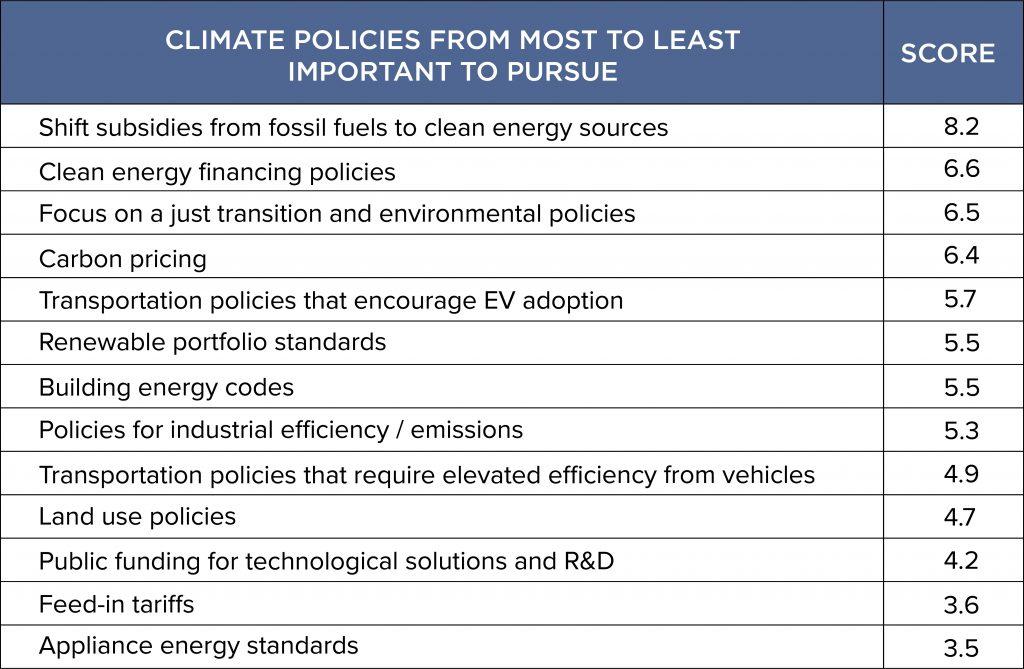
Methodology & In-Depth Findings
Over the past year, Solar Tribune has invested extensive time and resources interviewing experts across every sector and field that touches upon climate change and the need for action: advocacy groups, scientists and academics, politicians and government leaders, writers, influencers, and more. In connecting with these over 100 experts, our goal has been to ask them for input on the type of action that we need to be seeing, both on a collective and an individual level, to fight climate change.
A key resource built out thanks to these invaluable conversations has been a compendium of proposals, supporting quotes, and links and documents where Solar Tribune readers can find out more information when they want to dig deeper. You can wade through the bevy of policy priorities, individual recommendations, and other outcomes from this project at the following links:
This extensive interviewing process is still an ongoing and ever-evolving effort, meaning we’re continuing to build out the above resources (so, please continue to check in on them and see these ‘virtual conversations’ grow!). But in answering those questions, the experts with whom we were connecting started sharing insights into some additional questions outside of the original prompts. Where we were asking for policy proposals that were important, these thought leaders were debating which were the most effective compared with which got the most bang for the buck (whether literal dollars and cents or in terms of political capital). They also highlighted actions that maybe weren’t as directly impactful on a CO2 level but were still intangibly vital. And a common theme of questions that kept coming up: how much should we really be discussing the importance of individual action compared with demanding accountability from politicians? Similarly, how much should we care about our household carbon footprints when the real impact is no doubt coming from the corporate carbon footprint?
Recognizing that these questions were just as critical, if not more so, than the original ones we had been asking, as well as reflecting on the fact that we had inherently built an extensive rolodex of climate experts (both those who participated with shareable quotes and those we’ve connected with on other levels behind the scenes), we realized it was important to take the next step. We want our contribution to the climate conversation to not just be listing out possible routes to take, but using these expert voices to quantitatively evaluate priorities.
With that, we rolled out our Solar Tribune Climate Expert Survey. Thanks to our over 100 participants who were generous enough to share their time and insights with us via private survey, we’re happy to now be publishing version 1.0 of those results. This iteration is just version 1.0, not a final product, because we do recognize some limitations inherent in our results thus far, and we want to engage with more experts, people with more diverse backgrounds and perspectives, and build a consortium of climate experts who can help us minimize those limitations while maximizing the applicability of our results.
The goal is to really gauge where the climate action winds are blowing, where they may be blowing in coming years, and (most importantly) where they should be going. So, let’s dive in..
Questions Asked
To start with, we collected 13 of the top climate policy priorities that came from our one-on-one expert interviews. These 13 items represent themes, policy mechanisms, and actions that authoritative thought leaders have advocated for in our discussions, and (in no particular order) they are:
- Carbon pricing
- Shifting subsidies from fossil fuels to clean energy sources
- Clean energy financing policies
- Renewable portfolio standards
- Feed-in tariffs
- Transportation policies that encourage EV adoption
- Transportation policies that require elevated efficiency from vehicles
- Building energy codes
- Appliance energy standards
- Policies for industrial efficiency / emissions
- Public funding for technological solutions and R&D
- Land use policies
- Focus on a just transition and environmental justice
Presenting these 13 policies, we asked each survey responded to rank all of these options against each other in three different categories:
- Importance
- Cost-effectiveness
- Effectiveness in reducing CO2
Another topic that came up frequently in expert interviews was the debate about how much emphasis should be placed on different potential groups and influencers for climate action. Some activists express anger and frustration about the trend of focusing on how individuals can reduce their carbon emissions because it is theoretically letting the most polluting entities—corporations—off the hook. Along that same train of thought, many argue that it simply should not matter what any particular individual or corporation can do because, in the end, they’re always going to act in their self-interest. As such, this argument goes, regulators and policymakers must be the ones instilling certain requirements towards sustainability, or at the very least putting a thumb on the scale to make sure the dangerous externalities of climate change are priced into the decisions made by people and companies. To address these points, we asked our respondents to rank on a scale of 0-5 how important it was to:
- Encourage individual citizens to take action on climate
- Encourage policymakers to take action on climate
- Encourage individual corporations to take action on climate
And, lastly, to ensure we knew who we were talking to, we asked from demographic information from any respondents who were comfortable sharing the following:
- Their political affiliation
- Their state or country
- Their gender
- The industry/sector in which they work
- Whether they consider themselves a climate activist
Initial Results
The results from this Version 1.0 of the survey are thought-provoking, and they can best be expressed through graphical representation:
Limitations of the Survey
Before diving into the implications from these results and the conclusions we can begin to make, we must walk through some of the previously suggested limitations. These limitations are important to analyze because they should give us some pause in declaring the results authoritative quite yet.
The biggest limitation established was in who we were able to get to complete the survey. Though we spent extensive effort in reaching a broad set of leaders—people of different political persuasions, lines of work, and more—the people who did end up participating are still a self-selecting group. As such, for full transparency, we do want to present a breakdown of who these 120 people are whose answers comprise version 1.0:
 Note: Dark blue has most respondents, lighter blue is moderate respondents, yellow is very few submissions.
Note: Dark blue has most respondents, lighter blue is moderate respondents, yellow is very few submissions.
 Note: Dark blue has most respondents, lighter blue is moderate respondents, yellow is very few submissions.
Note: Dark blue has most respondents, lighter blue is moderate respondents, yellow is very few submissions.
Obviously, we’d love to fill this out more completely and fully representatively. We want respondents in equal amounts from both sides of the aisle; we want as many women as men to participate, we want to target influencers and stakeholders who don’t purely consider themselves as climate advocates but are actually just operating in their industry while considering the realities of carbon emissions. If you fit the bill of any of these groups currently underrepresented in our survey, or you know anyone who would fit the bill and is indeed a thought leader, please let us know!
Outside of those who participated, the structure of our survey also has inherent shortcomings that should be acknowledged. Our list of climate policy proposals is, of course, incomplete, and it’s also ignoring that the ideal direction is a suite of complementary policies rather than just one ‘best’ option. No single proposal will be a silver bullet, but by tapping into all of the best tools available that’s how you can build great success. That theme came up time and again in our interviews, and we’ve acknowledged the need for this discussion of ‘System Changes, No Silver Bullet’ on this page, but by artificially requiring respondents to pick one policy over another some of that nuance can certainly be lost.
Another limitation came from the fact that we lumped together policies that stretch expanded beyond single sectors: transportation to power generation to the built environment to land use and more. Each of these sectors has specific goals and unique considerations, so pitting them head to head is a bit of an apples and oranges comparison, in theory. That said, we’re approaching this as a theoretical government leader or political candidate must approach it in practice. When these leaders commit to climate action, various sectors are all essential to address, though some may be more urgent, have lower-hanging fruit, or require different levels of political capital. In that way, pitting these policies against each other is often what leaders must do.
But those limitations should not mean the results of this survey are moot. In fact, in conducting this survey we accomplished an important feat in getting responses from curated experts, not the general public or not decision-makers who aren’t as well-versed in the climate reality as they are in general politics. The people who have provided answers in this version 1.0 are the people who live, work, and breathe these important topics. So, let’s see what insights we can glean from the previously listed results.
Implications of the Results
Recognizing that we have to hedge how much we read into these results given the above limitations, we can still start to recognize some important and valuable trends. First and foremost, the relative ranking of policy options prove to be telling. Shifting subsidies from fossil fuels to clean energy was definitely the most recommended by our experts, as it was rated as the most important, the most effective, and the most cost effective policy across the board.
Trailing behind, carbon pricing and clean energy financing were both in the top 3 of each of these categories as well, showing that these are also critical to any sort of massive package of policies to push forth.
On the other side of the equation, the bottom 5 of each of the categories included public funding of R&D, appliance energy standards, feed-in tariffs, and land use policies. Note that these low relative rankings doesn’t necessarily mean these policy options aren’t worthwhile. In fact, our one-on-one interviews with experts have provided us with key insider quotes endorsing them specifically (see these quotes endorsing R&D, appliance energy standards, feed-in tariffs, and land use). That said, the inherent ‘game’ of this survey was prioritizing and figuring out which policies were atop the priority list and which were less imperative and/or time sensitive. Given that reality, if there was compromise needed to get a wide-scale package implemented, for example, perhaps these types of policies would need to be at the top of the chopping block
While these notes are the most obvious standout points from the survey results, one of the most compelling discussion points come where there’s disparity between the questions. Environmental justice, in particular, ranked as the fourth most important policy consideration but in the bottom three in terms of effectiveness and cost-effectiveness. That result demonstrates that building in the social equity factor will surely add costs to a policy package without as much direct impact to CO2 results, but our experts still ranked it highly for all the obvious reasons why it’s the right thing to do.
Another important conclusion comes in the ranking of individual vs. corporate vs. policy focus. Our expert respondents overwhelming found that policymakers are the ones that should be held most accountable, followed by corporations, and with individuals coming in last. This relative ranking tracks with the scale of potential impact (i.e., government action can have impact many individual corporations, and the typical corporate impact encompasses the carbon footprint equivalent of hundreds to thousands to even millions of individuals). Similarly, these results fall in line with the role each actor plays: a government’s job is to protect its people and ensure they prosper, while a corporation’s sole goal in a capitalist environment is to maximize shareholder return, and an individual is most likely to work altruistically after their basic needs are met—but again the impact of what individuals can do is limited without them trying to tap into that corporate or government level (in fact, that’s the individual action many of our experts recommended—trying to influence change at your workplace or with your wallet as a vote in the economy, or by mobilizing voters and putting pressure on elected officials).
Refining and Building Out Moving Forward
As stated, these results simply represent version 1.0. The Solar Tribune goal is to multiply the number of respondents to our survey and make them more representative and then check back in with a version 2.0.
If you would like to participate, please get in touch with us at matt@solartribune.com. If you specifically have recommendations about experts who should get involved that are women, Republicans, or not climate advocates, per se, then we’d love for you to make those connections for us as well!
And even if you aren’t in those groups who are less represented in our results, we still want more volume of respondents so we have the granularity in version 2.0 we can break out the results even further:
- What policies are favored for Republicans vs. Democrats?
- How does the sector in which you work in influence who you think should be pushed most between individuals, corporations, and government officials?
- Do men and women differ in the priority they place on different sectors of action?
These are the nuanced and important questions we’re eager to answer—but we need your help to do so!
The post 2021 Climate Policy & Industry Priorities: Survey of Industry, Academic, and Political Leaders appeared first on Solar Tribune.
]]>The post The Solar Decade is Here appeared first on Solar Tribune.
]]>
2020 Was Solar’s Best Year Ever
Even in the face of unprecedented challenges brought on by the COVID-19 pandemic, the solar industry enjoyed its best year ever in 2020, this according to the “U.S. Solar Market Insight 2020 Year-in-Review” report released in March by the SEIA and Wood Mackenzie. A record 19.2 GW of new solar capacity was added in 2020, breaking the previous high-water mark of 15.1 GW set back in 2016.
This note from the SEIA’s press release is perhaps the most remarkable detail of the whole report:
“The 8 GWdc of new installations in fourth quarter 2020 marks the largest quarter in US solar history. For perspective, the US solar market added 7.5 GWdc of new capacity in all of 2015.”
In 5 short years, the solar industry is now adding more capacity on a quarterly basis than it used to add annually! And this type of explosive growth may now be the norm, according to SEIA projections.
The SEIA/Wood Mackenzie report predicts that the solar industry will reach a landmark annual installation rate of 50 GW in new solar capacity by 2030. The result will be an addition of more than 324 GW of solar capacity over the next 10 years, quadrupling from current levels.
The ambitious projections are in part a result of broader trends among customers, utilities, and corporations to decarbonize the grid, in addition to the improved solar economics that make the energy source cheaper by the year. Increased support from the federal government and a number of state governments is putting additional wind at the sails of the industry. In fact, the report credits the two year extension of the federal investment tax credit (ITC) with increasing the solar deployment forecasts from 2021 to 2025 by 17%.
Feds Pledge to Cut Solar Costs
If the solar industry is going to take off in the next 10 years, like the SEIA predicts, it will be in no small part due to pro-solar public policies taking hold across the country that provide a significant accelerate to fueling broader solar adoption. Just this month, there were significant pronouncements by the federal government and several state governments on that exact front.
The U.S. Department of Energy announced in March that they are setting a new target to cut the cost of solar energy by 60% within the next ten years. The goal was described as necessary to accelerating solar deployment across the country and achieving the Biden Administration’s goal of a 100% clean electricity grid by 2035.
DOE is putting $128M in federal funding behind the effort, which will go to targeted initiatives designed to advance already promising solar technologies. Funding priorities through DOE’s Solar Energy Technologies Office (SETO) will include:
- $40M for Perovskite R&D: DOE awarded funding to 22 R&D projects across the country “that will advance perovskite PV device and manufacturing research and development—as well as performance through the formation of a new $14 million testing center.”
- $3M for Perovskite Startup Prize: Funding for this program will allow for more rapid commercialization of promising Perovskite technologies by providing critical seed funding to early-stage companies involved in the space.
- $20M for Cadmium Telluride PV development: The National Renewable Energy Laboratory (NREL) was awarded $20M to advance research and domestic production of Cadmium Telluride PV solar cells, a promising thin-film solar technology that is cheap and efficient.
The feds aren’t the only ones putting their money where their mouth is when it comes to encouraging the expansion of the nation’s solar energy generation capabilities. Governors in Pennsylvania and Massachusetts likewise made waves by announcing historic efforts to accelerate their respective state’s transition to a cleaner energy future.
Pennsylvania Governor, Tom Wolf, recently committed to a 191 MW solar procurement via planned expansive solar arrays across nearly 2,000 acres of Pennsylvania farmland. This represents the largest such solar commitment made by any state in the country. Pennsylvania plans to purchase at least half of all electricity used by the state’s government buildings from the planned solar arrays. The plan is for the arrays to be producing power by Jan 1, 2023.
Just days ago, Massachusetts Governor Charlie Baker signed a sweeping clean energy bill into law that establishes 2050 as the state’s benchmark to reach net-zero for greenhouse gas emissions. Among other things, the bill expands access to solar net metering credits and removes barriers in current solar policies that limit solar energy access to low-income communities, thus allowing for more equitable access to renewable energy for all residents of Massachusetts.
Perfect Storm of Opportunities in 2020-2030
The solar industry’s promising near-term future is owed in large part to a confluence of factors that are simultaneously at play and helping to fuel widespread solar adoption across multiple sectors. These factors can generally be summed up as follows:
- Historic government support for solar initiatives: As noted in previous articles, President Biden has made combating climate change an administration-wide priority. If even a fraction of his campaign promises and post-election commitments come to fruition, then his Administration will still clearly be the most pro-solar Administration we’ve ever seen in this country. The previously mentioned DOE funding announcement is a sign of what’s to come. As public opinion continues to shift in favor of renewables, expect lots of states (see Pennsylvania and Massachusetts) to follow suit.
- Solar costs continue to plummet: It was just a handful of months ago when solar energy was officially dubbed the cheapest form of electricity in history. This comes as little surprise as the costs associated with solar energy systems have plummeted in recent years. The unmistakable downward trend will continue this decade, making solar more and more affordable for the average homeowner.
- Residential demand fueled by desire for energy resilience: The recent energy grid crisis in Texas, sparked by a rare cold snap in the Deep South, is just the latest reminder of the perils of being beholden to an antiquated energy grid. Similar situations were experienced in Puerto Rico after Hurricane Maria and in California after its recent rash of devastating wildfires. The fact of the matter is that climate change is making these otherwise rare weather events far more commonplace. Look for more and more homeowners in the next several years to look to the solar energy market to achieve a degree of energy independence from an increasingly unreliable energy grid.
- Corporate-driven demand: Large corporations continue to be a major driver of increased growth in the U.S. solar market as more and more major corporations adopt ambitious renewable energy goals. Annual installed corporate solar capacity (both on-site and off-site) in 2019 was 1,283 MW, a nearly 75% increase from just 4 years earlier. Expect that trendline to only continue as environmental sustainability continues to become a point of emphasis in corporate boardrooms across the country.
When taken together, these factors combine to set the solar industry up for some historic achievements to take place over the next decade. It is no wonder that the SEIA and Wood Mackenzie are so bullish on what the possibilities are for the industry in upcoming years. The forecast for the industry is good news for humankind, as we cannot afford to lose any more ground in the fight to reverse the effects of climate change. Bold actions and big results will be needed.
Cover Photo Source: Forbes
The post The Solar Decade is Here appeared first on Solar Tribune.
]]>The post Hopes for Solar Spring Anew in Texas Following Energy Grid Debacle appeared first on Solar Tribune.
]]>
Setting the Record Straight
By now you have surely heard plenty about the rare winter storm that impacted Texas a few weeks ago, leading to an unprecedented statewide power failure that left millions of residents without power; for days on end in some cases. The death toll from the storm will take months to fully tabulate, but it will surely reach into the hundreds. The widespread property damage associated with the storm and its aftermath will likely make it the most costly winter weather event in state history.
Unfortunately, there has been no shortage of misinformation about the role that the state’s renewable energy sector played in the power grid failure. The much-maligned Electric Reliability Council of Texas (ERCOT), which oversees the overwhelming majority of the state’s energy grid, has been clear in pointing out that frozen wind turbines and iced over solar panels played a negligible role in the grid’s failure. Dan Woodfin, Senior Director for ERCOT, specifically stated that frozen wind turbines were “the least significant factor in the blackouts.”
Instead, frozen natural gas pipes and a lack of standby reserves brought the grid to its knees. Frozen instruments at coal and nuclear facilities further compounded the state’s problems. Natural gas, coal, and nuclear fuel sources comprise well over 2/3’s of the state’s fuel mix. It is not hard to conclude that the Lone Star state’s heavy reliance on fossil fuels, coupled with the lack of adequate winter weatherization at its fossil fuels production facilities, are ultimately what did the state in.
Financial Incentives Point to Solar Boon in Texas
We have covered in previous articles Texas’ position as a state that is ripe for rapid near-term growth in solar energy generating capacity. That likelihood is now perhaps doubly true as the need for the state to diversify its energy generating capabilities has perhaps never been more obvious. Even before the latest Texas energy crisis, the state was planning for a significant addition of solar capacity to the grid in just the next couple of years. From S&P Global Market Intelligence,
“Between 2021 and 2023, developers plan to add roughly 35 GW of combined solar and wind capacity to the state’s primary transmission system, operated by the Electric Reliability Council Of Texas Inc., according to the grid operator’s most recent data.”
Texas is second only to solar behemoth California in both cumulative installed solar capacity and total households with residential solar energy systems. Yet on a per capita basis residential solar adoption in state remains miniscule as the 783,000+ households with solar comprise less than 1% of the total households in the state, underscoring the industry’s massive growth potential. Texas’ deregulated energy market had long kept utility prices low for the typical user, thus not creating the cost incentive to switch to solar that is present in many other states. We now of course know the long-term peril of relying so heavily on such a system.
The financial incentives in Texas are changing in real time, however.
Some households in Texas were hit by energy bills that were some 10,000% higher than their typical bills. One such customer, a 70-year-old living off Social Security, had to deplete his modest savings to pay off a $16,752 (!!!) energy bill. This particular gentleman, and others hit with outrageous bills, were customers of Griddy, a small company in Houston that provides electricity at wholesale prices. As the typical supply and demand dynamics went haywire in the midst of the energy crisis, so too did the wholesale energy market which is especially vulnerable to even modest fluctuations in supply and demand.
The savings account-busting energy bills that many Texans were recently faced with may just be the tip of the iceberg. Make no mistake about it, the government of Texas whether they want to admit it or not will need to spend billions of dollars in modernizing their grid infrastructure and protecting against future weather-induced catastrophes. Keep in mind that such weather events are forecasted to become more unpredictable and impactful as the consequences of climate change become more acute.
There is now political pressure on elected officials from both parties in Texas to bless significant expenditures in infrastructure maintenance and improvements. The cost will of course ultimately be passed on to customers in the form of higher utility bills. If you are a Texas resident looking for a sign to take the leap and embrace a residential solar energy system, then this is it.
Weather Disasters Spur Greater Solar Adoption
Crises have a way of being especially clarifying for those impacted the most by them. This dynamic is perhaps most true when it comes to people who have been severely impacted by natural disasters. Let’s face it, losing your beachside house in a hurricane doesn’t exactly inspire most to rebuild and give it another try.
The notion that the recent debacle in Texas could result in a flood of new interest in solar energy is not without recent precedent.
California’s issues with recurring raging wildfires are a prime example of the incompatibility of pre-21st Century energy infrastructure and weather events that are increasingly volatile and without precedent. Recall that California’s largest utility, PG&E, was forced to intentionally cut off power for millions of customers in 2019 as a preventative measure in order to limit wildfire outbreaks. PG&E Chief Executive, Bill Johnson, confessed that it could take a decade for the company to improve its electrical system enough so that it doesn’t have to resort to customer blackouts as a wildfire risk mitigation strategy.
In the wake of its high-profile struggles battling widespread wildfires, California has seen renewed interest in solar-plus-storage energy systems as homeowners seek to reduce reliance on an increasingly unreliable energy grid. State incentives geared towards making solar batteries more affordable for consumers have helped to fuel the transition. The result has been clear. According to a July 2020 article by Scientific American, 174 permits for energy storage projects were issued in the front half of 2020 in Sonoma County, eclipsing the total number issued in all of 2019 (161). Marin County, CA issued 763 solar permits in the 12-month period ending on June 30, 2020, an increase of 136% from the previous year.
The story was similar in Puerto Rico. After the island’s national energy grid was ravaged by Hurricane Maria in 2018, record numbers of the country’s residents installed home battery systems.
No energy source is 100% foolproof, but the events that recently transpired in Texas are a stark reminder of how vulnerable fossil fuel-dependent energy grids are to potent weather storms. Texans used to cite their prowess in the crude oil and natural gas markets as an example of “energy independence.” Such an assertion now comes across as pretty tone deaf. If there is any good to come from Texas’ recent misfortunes it is that these events are sure to hasten the state’s march towards a more renewables-focused future, and maybe then the state’s promise of energy independence can ring true.
Cover Photo Source: The Verge
The post Hopes for Solar Spring Anew in Texas Following Energy Grid Debacle appeared first on Solar Tribune.
]]>The post Economic Downturn Highlights Need for a ‘Just Transition’ appeared first on Solar Tribune.
]]>
A Just Transition is Good Politics
In just the first several days of his presidency, President Biden has made it clear that addressing climate change will be a prominent feature of his administration. The President has assembled the largest team ever inside the White House that is dedicated to climate change policy. This so-called Climate Cabinet is a recognition by Biden that climate change is no longer a niche public policy challenge that can be pursued within the confines of the Environmental Policy Agency, but rather, an expansive challenge affecting ever corner of the federal government.
The brute politics of climate change on Capitol Hill, however, have not changed much since Biden was last in the White House. Political intransigence from U.S. Senators from fossil fuels-dependent states remains an omnipresent challenge to achieving any big legislative victory on the climate change front. This is especially true in an evenly divided Senate where Joe Manchin – from heavily coal-dependent West Virginia – is arguably the body’s most influential Senator.
The COVID-19 pandemic presents an opportunity to fundamentally change the politics of climate change by highlighting the importance of a “just transition.” Put simply, a “just transition” is a term used to emphasize that the people and communities that powered America since the days of the Industrial Revolution deserve to be supported – not left behind – as we pivot to a more sustainable approach to producing energy. While the fossil fuels industry is rightfully criticized for its role in exacerbating the effects of climate change, workers within the industry are just trying to earn a respectable living and support their families, often in communities with few other job prospects.
On the campaign trail, Biden leaned into this conversation. His Climate Plan calls for the formation of a taskforce to help coal and power plant-dependent communities diversify their economies. The taskforce would:
“…help these communities access federal investments and leverage private sector investments to help create high-paying union jobs based upon the unique assets of each community, partner with unions and community colleges to create training opportunities for these new jobs…”
The Climate Plan also encourages the passing of federal legislation that would protect the retirement benefits of miners, their widows, and their dependents.
Not only are the above policies morally just, but they are also good politics that can hopefully loosen the logjam on Capitol Hill. It is imperative to not shun fossil fuels workers or make them feel guilty for the climate predicament our world is confronting. Federal policies that provide for the retraining of fossil fuels workers, in addition to other financial incentives, need to be a pivotal component to any broader climate change policy. This mindset is critical to winning support from members of Congress who represent districts and states that are heavily dependent on the fossil fuels industry.
COVID-19 Adds Urgency to the Moment
People who work in the fossil fuels industry and/or who live in communities whose economies rely on the industry have long been presented with a false choice – either you can have a job or have a healthy environment, but not both. In reality, robust climate action will have a stimulating effect on the economy and clean energy job prospects are overwhelmingly brighter than those in the fossil fuels industry.
This is precisely the message that John Kerry, U.S. Special Presidential Envoy for Climate, made just days ago during his first appearance in the White House Press Briefing Room.
John Kerry: “Unfortunately, workers have been fed a false narrative … that somehow dealing with climate is coming at their expense. No, it’s not.” pic.twitter.com/yMy9bWKqOc
— The Recount (@therecount) January 27, 2021
The COVID-19 pandemic has highlighted the fragility of the fossil fuels industry. In many respects, the pandemic has just greatly accelerated the employment trends seen in the clean energy sector visa vie the fossil fuels sector for years. The 2020 Clean Jobs Report released by E2 noted that in 2019, total clean energy jobs outnumbered total fossil fuels industry jobs by a 3-to-1 margin.
Clean energy jobs also grew at a greater clip than all jobs nationally in the immediate 5-year period before the 2020 economic downturn that so disproportionately affected the fossil fuels industry.
Clean energy job growth outpaced job growth in the fossil fuels industry, especially in fossil fuel-dependent states like Pennsylvania before COVID and that trend is only likely to accelerate once we are on the other side of the pandemic.
It should come as little surprise that many fossil fuels workers dealing with job losses related to the COVID-19 downturn are finding re-employment opportunities in the solar industry. A recent article in the Houston Chronicle highlighted this dynamic in Texas. The Lone Star state has seen a flood of large-scale solar investments in recent years, with companies like Lighthouse BP, a San Francisco-based solar company, investing more than $1 billion in solar projects in the state. Their CEO, Kevin Smith, noted that their growth is being supported by an influx of former oil and gas workers.
“No question, we are getting workers moving over from oil and gas. A lot of the oil and gas skills are applicable to solar.”
Raj Prabhu, CEO of Mercom Capital Group, an Austin-based clean-energy research firm, thinks that this dynamic is just beginning.
“Oil and gas is boom and bust, while solar has seen nothing but gradual growth over the last 10 years. This is where the jobs are going to be and where the economy is heading. If you’re not going to make the shift, you’re going to be left behind.”
We as a country can’t afford to allow today’s fossil fuels workers to be left behind. The social, economic, and political consequences are too great. While clean energy job prospects are appealing, old habits die hard. There is a great deal of familial pride and personal dignity that today’s coal miners find in their line of work. The collapse of the coal industry under COVID-19 only adds urgency to the just transition movement.
Germany Offers a Blueprint
While the United States largely shirked its climate change responsibilities in recent years, other developed countries pursued bold action. Germany is one such nation that passed historic legislation to wean the country off coal, while still supporting the economic needs of coal workers.
Last summer, Germany passed groundbreaking legislation to phase-out all of the country’s coal power plants by 2038. The legislation was born out of the multi-year efforts of a commission that consisted of industry, academia, environmental groups, and labor unions. Not only did this historic legislation establish a timetable for shuttering the country’s coal-fired power plants, it ensured that coal-dependent regions would receive critical government support to deal with the economic shock from such a move.
The legislation earmarked 40 billion euros in government aid to coal-dependent regions and ensured that coal plant operators would be compensated for shutting down capacity.
Germany has combined federal financial support for transitioning coal workers with local-led efforts focused on coal plant adaptive reuse and community revitalization strategies for an effective holistic approach that ensures a just transition for coal workers. In an example of the latter, a massive former coal mining complex in Essen, Germany was preserved and transformed into a UNESCO World Heritage site that now pumps tourism dollars into the community and serves as a prominent cultural amenity. Other examples can be found in the video below.
A holistic approach that phases out coal-fired power plants, invites key stakeholder groups to the policymaking table, and commits federal dollars to worker retraining programs and other support programs may serve as integral elements to a Biden Administration-led effort to aggressively combat climate change in way that is fair and just for America’s fossil fuels workers.
There are growing signs that the typical political alignment on climate change is being reshuffled. Just recently, some of the biggest names in corporate America like Amazon’s Jeff Bezos and Ford Motor Co. CEO, Bill Ford, penned a letter to President Biden pledging their support to the fight against climate change and committing to creating more American jobs in the process. They understand that the stakes couldn’t be higher. A recent poll commissioned by the United Nations dubbed as the “biggest survey ever” of global sentiment on climate change found that almost 2/3’s of the 1.2 million people surveyed agree that the world is currently in a state of climate emergency.
The politics as usual approach to climate change can’t persist forever in the United States. Legislation that places a premium on a just transition for fossil fuel workers may be the key to unlocking the support needed on Capitol Hill to go big.
Cover Photo Source: World Oil
The post Economic Downturn Highlights Need for a ‘Just Transition’ appeared first on Solar Tribune.
]]>The post Tesla Innovations Bring New Promise to Electric Vehicle Industry appeared first on Solar Tribune.
]]>
Tesla Lays out Vision at ‘Battery Day’
Tesla held their much anticipated “Battery Day” on September 22, following the company’s quarterly shareholders’ meeting. At the event, Elon Musk laid out the company’s plans to usher in a new generation of electric vehicle batteries that will be more powerful, longer lasting, and lead to significant overall cost savings for future buyers of Tesla vehicles.
One of the biggest takeaways from Tesla’s Battery Day is that the company is totally overhauling the design of the lithium-ion battery. The newly designed cylindrical batteries will be 6 times more powerful than present-day batteries, store 5 times more energy, and increase driving range by 16%.
The interior of the newly designed batteries resembles a fruit roll-up of sorts, as the traditional “tab” lithium-ion battery design is replaced in favor of a tightly packed jellyroll containing both the positive and negative electrodes of the battery. The rolled-up design cuts down on the distance that the electrons have to travel, helping to achieve improved efficiencies. The new tabless batteries are dubbed the “4680 battery,” a reference to its larger dimensions (46 mm diameter and 80 mm height) that allow for the aforementioned increase in energy storage and power gains.
In addition to the battery re-design, Musk and his team are aggressively going after battery cost reductions by eliminating one of the most expensive components of the battery – cobalt – in favor of nickel cathodes. The cost reductions achieved by virtually eliminating the need for cobalt also come with ancillary benefits of improved sustainability. For example, while new nickel material will be required in initial production, Tesla will eventually focus on recycling nickel from existing batteries thereby reducing the need to mine for precious metals. Cobalt is also toxic, and the fewer toxic materials being mined and processed around the world the better for all of us.
Cheaper Batteries = Cheaper Cars
The ultimate end game to revamping lithium-ion battery technology and cutting battery costs is of course to pass on these cost savings to the consumer in the form of a much more affordable vehicle. Tesla’s battery redesign allows the company to optimize the basic structure of a vehicle’s frame, leading to a lighter vehicle that relies on far fewer moving parts.
The combined redesign of both the new battery and the new structural elements of the vehicle will slash Tesla’s production cost per kWh by 56%. This monumental achievement opens up the door to a whole new generation of low-cost electric vehicle that can be brought to the market, and that’s exactly what Elon Musk has in mind.
Musk frequently highlights the connectedness between Tesla’s ‘trifecta’ of sustainability-focused business lines. Using mass produced cheaper batteries to drive down electric vehicle costs is the next frontier in global sustainability. As Musk stated at Battery Day:
“The three parts of a sustainable energy future are sustainable energy generation, storage, and electric vehicles…we intend to play a significant role in all three. So to accelerate the transition to sustainable energy, we must produce more EVs that need to be affordable and a lot more energy storage, while building factories faster and with far less investment.”
The new battery technologies that Tesla is pursuing will allow for the company to roll out a $25,000 fully autonomous electric vehicle to the market in just 3 years’ time. Musk later confirmed on Twitter that Tesla will be producing a brand-new line of vehicle at the $25,000 price point rather than offering the option for one of their existing vehicles.
We aren’t cutting the price of Model 3 to $25k. I was referring to a future car that will be smaller than Model 3.
— Elon Musk (@elonmusk) September 28, 2020
Tesla’s plan would obviously turn the automobile industry on its head. Up to this point, Tesla has been firmly entrenched as a luxury car maker that produces a product outside the reach of your average American consumer. A more affordable vehicle would be good for Tesla’s bottom line as it opens the door to tens of millions of new prospective customers based on price alone, but more importantly, this is just the type of groundbreaking development that would meaningfully accelerate the global transition to sustainable energy.
The Bigger Picture
Tesla’s new battery technology and affordable car production goals underscore a growing inevitability that is apparent to even casual observers of the automobile industry – the days of the internal combustion engine are numbered.
Even before Tesla held its Battery Day and unveiled its 3-year benchmark for rolling out a more affordable vehicle, industry analysts were already throwing out a similar timeline for electric vehicles to surpass their gas guzzling peers when it comes to economic feasibility. As Aakash Arora of the Boston Consulting Group put it in early September:
“Three years from now, there will be no debate that buying a gasoline car is an economically worse decision than buying an electric car.”
Far from a pie-in-the-sky vision, this projection actually jives with other electric vehicle industry forecasts made years ago. An analysis by Morgan Stanley and Bloomberg New Energy Finance (NEF) in 2017 projected that “EVs will be cheaper to buy than internal combustion engine (ICE) cars in most countries by 2025-29.”
Lithium-ion battery prices have plummeted in recent years from about $1,100/kWh in 2010 to about $150/kWh in 2019 – a drop of over 85%. A price of $100/kWh has long been viewed as the “holy grail” for the industry and the potential inflection point at which electric vehicles would roughly be at price parity with gas-powered ones.
It is worth noting that the topline price comparisons between electric vehicles and gas-powered vehicles fails to account for the immense lifetime savings that electric vehicles afford to their owners. According to the AAA, a large gas-powered sedan will have an all-in operating cost (fuel, maintenance, repairs) of 22.26 cents per mile, which works out to about $3,400 annually for a car driven 15,000 miles. The economics of lifetime car ownership are a no-brainer when compared to a Tesla that requires no fuel and has a fraction of the internal moving parts that are the source of most car repairs.
The phasing out of the gasoline-powered personal vehicle represents arguably the most impactful – and achievable – change to human behavior that can meaningfully address the effects of climate change.
A study conducted by researchers at Northwestern University that was released just last month shows just how dramatic the economic, social, environmental, and health benefits would be in a world populated by more electric vehicles and less gas-powered ones. According to the report, if just 25% of combustion-engine vehicles in the U.S. were replaced by electric vehicles, then the U.S. would save almost $17B annually in reduced damages from climate change and air pollution. Using 2014 emissions data and the same year’s energy generation infrastructure, the researchers found that a 25% adoption rate of electric vehicles in the U.S. would have reduced carbon emissions by 250 million tons. There are over 1 billion passenger vehicles in operation around the world, yet less than 5 million of them are electric, so the room for growth is immense.
The battery innovations that Tesla is pursuing and the promise of a new $25,000 electric vehicle in the next 3 years are significant developments in what is still a nascent industry. While the U.S. government has dragged its feet in combating the effects of climate change in recent years, Tesla and other private companies have stepped into the void. Not only are Tesla’s innovations exciting to follow, but they may quite literally be the key to reversing the effects of climate change in the shortest amount of time. We should all be thankful for their unwavering commitment to sustainability.
Cover Photo Source: Mercury News
The post Tesla Innovations Bring New Promise to Electric Vehicle Industry appeared first on Solar Tribune.
]]>The post Plenty at Stake for Solar Industry in 2020 Presidential Election appeared first on Solar Tribune.
]]>
Two Known Entities
For renewable energy voters one thing is for certain – you know exactly what you’re getting with both presidential candidates. The incumbent, President Donald Trump, has a 4-year record to run on and to defend. His record when it comes to renewable energy policy is, frankly, abysmal, but we’ll get into that later.
His opponent, Joe Biden, has long served in elected office and is likewise not a mystery to pro-renewables voters. The Obama-Biden Administration presided over what was unquestionably the most prosperous era for renewable energy in American history. According to the Energy Information Administration (EIA), the U.S. had 0.62 million kW of installed solar electricity capacity in 2009 when Obama and Biden took office. That number sky-rocketed to 35 million kW by the time they left office in 2016, representing a staggering growth rate of 5,733%.
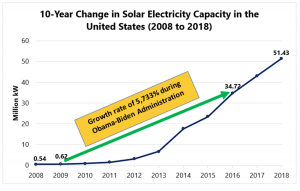
Source: Graphic generated by Solar Tribune using data from the Energy Information Administration (EIA)
The rapid growth of renewable energy capacity during the Obama-Biden Administration was due largely to the abundance of pro-renewables policies the Administration pushed.
It was Biden who was tasked with overseeing the implementation of the $787 billion American Recovery and Reinvestment Act (ARRA), which dedicated nearly $90 billion alone to renewable energy priorities, representing at the time the largest federal investment in clean energy in U.S. history. The Administration also put significant public support behind a host of other pro-renewables initiatives including the $4 billion Clean Energy Investment Initiative, which encouraged investment in promising renewable energy technologies. A lengthy list of other pro-renewables accomplishments that the Obama-Biden Administration achieved can be found here: Climate and Energy Record.
Thanks to the array of pro-renewables initiatives the Obama-Biden Administration pursued while in office and the public monies put towards solar and wind energy technologies, the costs associated with solar and wind energy production were drastically reduced. This is a dynamic that we have highlighted before at Solar Tribune. The Department of Energy launched the SunShot initiative in 2011 with the sole purpose of reducing the total costs of solar energy by 75 percent by 2020. The DOE achieved over 90% of the cost reductions towards the 2020 goal by 2016, causing them to launch a new, more ambitious goal for 2030.
In short, Joe Biden can lay claim to being in the White House during an era that saw the most rapid growth in solar capacity on record and the sharpest decline in solar costs. It is hard to imagine where the industry would be if not for the forward-thinking, pro-renewables policies that the Obama-Biden Administration prioritized over a decade ago.
Trump Ignores Solar’s Progress, Potential
To say that the Obama-Biden and Trump-Pence Administrations embraced different philosophies when it came to growing America’s clean energy sectors would be quite the understatement. President Trump has taken an adversarial position on all things renewable energy since Day 1. Strangely, his anti-renewables stance seems primarily born out of an infatuation with being “pro-coal,” given the strong electoral support he enjoys from coal miners and related constituencies in Appalachian states.
The myriad of executive roadblocks the Trump Administration has thrown at the solar industry have been covered in some detail previously at Solar Tribune. This article offers a good primer on the policies that the Administration has pursued to undermine the solar industry over the past 4 years. Since the publication of that article 8 months ago, Trump signed on to a budget deal that failed to extend the solar investment tax credit (ITC) – a key incentive in drawing residential solar users to the market. The ITC is now set to expire entirely for homeowners by 2022.
Even with all of, the solar industry has still grown rapidly during Trump’s first term. The solar industry is more mature and diversified than it has ever been, proving to skeptics that, yes, the industry can thrive on its own merits without significant inducements from the federal government. In 2019, solar accounted for over 40% of all new electric generating capacity in the U.S. at 13.3 in total installed GW. This represents the industry’s highest share ever. The residential solar sector itself brought on a record-setting 2.8 GW of installed capacity in 2019. The solar industry as a whole grew by 23% from 2018 to 2019 according to the SEIA’s Year-In-Review report, a somewhat miraculous accomplishment given the tariffs and related uncertainty the industry dealt with throughout the year.
President Trump’s efforts to stunt the promising growth of the U.S. solar industry has always been peculiar given his penchant for taking credit for the nation’s economic successes. In fact, solar jobs in the United States were growing at a rapid clip UNTIL President Trump came into office and injected a high degree of job-jeopardizing turmoil into the industry.
But again, he views the electoral politics of coal vs. solar as a zero-sum game, and he clearly has no interest in pivoting from his full-on embrace of the coal industry even if there is no rational economic basis for doing so. Note that the solar industry employed 249,983 people in 2019, according to the above SEIA graphic. For comparison, the total number of people employed in coal mining jobs hovered around 50,000 throughout 2019, with that figure falling even further in 2020 amidst COVID-19 impacts.
Unsurprisingly, there is no mention of solar energy accomplishments or renewable energy campaign policies on the Trump campaign website.
Biden’s Vision
The difference in the level of commitment in growing the nation’s clean energy economy between President Trump and Joe Biden couldn’t be starker.
Joe Biden has outlined a vision for renewable energy policy – both economic and environmental – that is arguably even more audacious than what was pursued during the first 8 years he spent in the White House.
Earlier in the summer, Biden released a climate plan that closely resembles the plan released by former candidate and climate champion Jay Inslee, governor of Washington. Biden’s plan calls for investing $2 trillion over 4 years in clean energy in an effort to make meaningful progress in stunting the effects of climate change. This massive proposed level of investment is about 2,000 times higher than the $90 billion the Obama-Biden Administration set aside for clean energy investments in the American Recovery and Reinvestment Act (ARRA) in 2009.
The staggering scale of the commitment shows that Biden understands the challenge ahead. Biden’s plan is significantly more ambitious than the plan he unveiled during the early stages of the Democratic primary which called for $1.7 trillion in spending over a longer 10-year time period. Biden understands the urgency of the moment when it comes to growing the clean energy economy and tackling climate change.
In his remarks delivered back in July on the day of the plan’s unveiling, Biden stated:
“We’re not just going to tinker around the edges. We’re going to make historic investments that will seize the opportunity and meet this moment in history.”
Biden’s plan also calls for achieving 100% clean electricity nationwide, moving his initial target date set in the Democratic primary up from 2050 to 2035. Achieving such a goal would likely require the installation of hundreds of millions of solar panels nationwide. The Biden-Sanders Unity Task Force – established to bridge differences between the progressive and moderate wings of the Democratic Party – called just for that in their set of clean energy recommendations. From page 47 of their report:
“Dramatically expand solar and wind energy deployment through community-based and utility-scale systems. Install 500 million solar panels, including eight million solar roofs and community solar energy systems, and 60,000 onshore and offshore wind turbines that are manufactured in America, creating millions of jobs, including hundreds of thousands of union jobs that cannot be outsourced.”
Put simply, Joe Biden has embraced a clean energy and climate change agenda on a scale this country has never seen a presidential candidate do before. The ambitious clean energy attainment goals he has laid out will be a shot in the arm for a solar industry that has suffered plenty of unnecessary setbacks over the past 4 years.
The United States of America needs to be a global leader when it comes to investing in renewable energy and addressing the most pressing challenge of our time – climate change. This year’s presidential election will soon tell us how serious we are as a nation about re-assuming that responsibility.
You can find out how to register to vote in your state here: https://vote.gov/
Cover Photo Source: Solar Magazine
The post Plenty at Stake for Solar Industry in 2020 Presidential Election appeared first on Solar Tribune.
]]>The post Silver Linings Emerge for Solar Industry Amid COVID-19 Pandemic appeared first on Solar Tribune.
]]>
Planet Earth Enjoys a Respite
The “stay at home” orders and restrictions in travel implemented by countries across the world earlier this year to slow the spread of the COVID-19 virus represented a first-of-its kind social experiment that sought to collectively change human behavior on a massive scale. An unexpected benefit of this unprecedented disruption to modern life was the ensuing sharp reduction in carbon emissions, which gave Mother Earth a much-needed break in its ongoing battle against global warming.
In China alone, carbon emissions fell by 100 million metric tons according to one analysis that focused on a 2-week period after the Chinese New Year on January 25.
A scientific study released by environmental researchers in May noted that daily carbon emission levels in early April – when restrictions on movement were most widespread – fell by 17% from 2019’s average levels. The scientists focused their research on 69 countries that are collectively responsible for 97% of global carbon emissions. The researchers anticipate that emissions for the year will fall by 7% compared to 2019, which would be the biggest year-over-year drop since World War II.
Although welcome news, the decline in carbon emissions also shows the limitations of reducing emissions by altering human behavior alone. Afterall, 83% of carbon emissions remained in place even with almost all of the top polluting countries in the world curtailing their emissions in an unprecedented way. This reality underscores why more widespread adoption of solar energy and other forms of renewables need to play a central role in the fight against climate change, since behavioral modifications by humans can only achieve so much.
Solar Panel Output Ticks Up
The clearer skies brought on by worldwide “stay at home” orders have also led to another surprising outcome that environmentalists and clean energy enthusiasts are hailing – a noticeable jump in solar energy output.
A study released earlier this month in the scientific journal Joule studied the impact that less polluted skies in Delhi, India had on the solar energy capturing abilities of solar panels in the city. Researchers focused on Delhi in part because it is one of the most polluted cities in the world. India also enacted a quick and dramatic lockdown starting on March 24, making before and after comparisons easier to capture.

Photo Source: The Guardian; Pictured: New Delhi’s India Gate war memorial on 17 October 2019 and on 8 April 2020
The researchers found that the amount of sunlight reaching solar panels in Delhi during the lockdown increased by 8% in late March and 6% in April compared to the same time periods in 2017, 2018, and 2019. The researchers make the unmistakable tie between air quality and the effectiveness of solar energy systems, an often-overlooked component of the solar efficiency equation. This study confirms similar work conducted in 2018 on the deleterious effect of air pollution on solar panel efficiency in Delhi.
A reduction in carbon emissions and the continued adoption of solar energy go hand-in-glove when it comes to any meaningful climate action plan. As one of the study’s contributing authors, Ian Marius Peters, put it:
“We’ve gotten a glimpse of what a world with better air looks like and see that there may be an opportunity to ‘flatten the climate curve.’ I believe solar panels can play an important role, and that going forward having more PV installations could help drive a positive feedback loop that will result in clearer and cleaner skies.”
Wholesale changes in emissions standards the world over would instantly make existing solar energy infrastructure more productive. This fact underscores the great compounding effect that carbon reduction policies and expanded solar energy adoption can have in reversing the effects of climate change.
Shutdowns Hit Fossil Fuels the Hardest
The disruption that COVID-19 brought to the energy sector may have been dramatic, but at the same time, it didn’t dramatically alter the long-term trends that have been apparent for some time now. In fact, the virus-induced lockdowns that roiled the energy sector are likely to only hasten the decline of the fossil fuels industry.
As we’ve noted before at Solar Tribune, the oil and gas industry was upended by the lockdowns imposed earlier this year. The sharp decline in demand resulted in the once unthinkable – the price of crude oil was driven into negative territory.
Meanwhile, the current state and outlook for the coal industry is even worse. The Energy Information Administration (EIA) expects coal production in the United States to fall by 25% in 2020 due in large part to the sharp months-long decline in industrial production resulting from virus-induced lockdowns. Coal is also the only major source of electricity generation that the EIA projects will decline as a share of total U.S. utility-scale electricity generation. EIA projections show a fall from 24% in 2019 to 17% in 2020 before a small rebound to 20% in 2021.
Just as COVID-19 did little to disrupt the decline of the fossil fuels industry, so too will the renewables energy continue its upward trajectory. The U.S. solar market installed a record breaking 3.6 GW of solar PV in Q1, according to a recent report from the SEIA and Wood Mackenzie. This largely represents the pre-COVID landscape, and Q2 is surely to be worse. However, Wood Mackenzie still projects 33% annual growth with nearly 18 GW of solar PV installations brought online in 2020, thanks in large part to the utility-scale solar sector that will buoy the industry as residential and commercial installs take a COVID-related hit. EIA also remains bullish on the broader renewables sector, noting the following in their latest market outlook released in June:
“EIA forecasts that renewable energy will be the fastest-growing source of electricity generation in 2020. EIA expects the electric power sector will add 23.2 gigawatts of new wind capacity and 12.6 gigawatts of utility-scale solar capacity in 2020.”
The post-pandemic world will be much different than the pre-pandemic world. That much is for certain. There’s a renewed opportunity for solar energy specifically and the renewable sector generally to play a bigger role in fueling the energy needs of the world and in combating climate change. Let’s hope that the political will is there to make this post-pandemic world a reality.
Cover Photo Source: Bloomberg
The post Silver Linings Emerge for Solar Industry Amid COVID-19 Pandemic appeared first on Solar Tribune.
]]>The post Empowering Individual Action To Fight Climate Change appeared first on Solar Tribune.
]]>
Many thought leaders indeed espouse the mantra that true change will come via systematic and societal change rather than through shaming individuals for their actions. Indeed, reports have shown that over 70% of global emissions since 1988 have come at the hands of just 100 global companies. However, the doom and gloom of the frequent climate change reports and mixed targets has people looking for ways to take action. By remaining idle, people are more prone to what the psychiatric community has started to describe as “climate grief.”
Instead, millions are taking to the Internet and trusted resources to find out what action can be taken. And the result isn’t just to minimize personal guilt, but in fact collective action—changes in diets, driving habits, energy use, and more—can add up to be a powerful climate tool in aggregate. Even last Fall’s report from the United Nations Intergovernmental Panel on Climate Change (IPCC) made a pivot to stress that individual actions, in addition to collective actions, would be required to mitigate and prevent the worst potential climate change impacts, particularly when changes in behavior and lifestyle were enacted in complement of technological and structural change. The impact of such individual actions would be even greater in areas with higher wealth and inherently higher consumption lifestyles.
Source: Phys.org
So while the most impactful act an individual may be able to do to affect the climate in a positive way is likely voting for candidates and policies that will drive the needed systematic changes, many concerned citizens are looking at their personal carbon footprint and seeking out a way for them to improve.
A particular challenge, though, has been that as far back as the 1970s when conservation and energy efficiency was being touted by President Jimmy Carter amid the oil crisis, the energy-conscious lifestyle changes have been unfairly and unnecessarily associated with sacrifice and a decline in quality of life. The truth of modern technology and creative innovation across energy-related sectors, though, is that individual climate-positive actions can be made that maintain or even improve quality of life.
Seeking Ways to Empower Individual Climate Action
These facts lead Solar Tribune to a set of very important questions: What are the most impactful personal actions that individuals or small organizations can embrace to reduce carbon footprint and help mitigate climate change? What exactly is the measurable impact, as well as difficulty of those actions? And how can we educate the public on choosing and implementing these strategies.
These questions must not remain theoretical, and so we’re looking to bring together the great energy and climate minds to kick off this much-needed conversation. Similar to our compendium on what climate policy mechanisms are the most critical in the public push towards effective action, Solar Tribune plans to reach out to leaders across the relevant industries to ask the above simple, but necessary, questions.
Below we’ve highlighted the main categories under which the answers to those questions may come, kicking it off with some publicly available information on potential options. As we engage in these conversations with thought leaders, we’ll update this page with their input, the big ideas, and the critical conversation. In that way, this page will quickly become an anthology of approaches and strategies to move climate-positive action into what we need them to be for the next decade and how those ideas can be best promoted.
If you have questions, thoughts, or want to add your voice to the mix in this collection of ideas, please reach out to us directly.
Investment
Investing in Climate Positive Companies
Source: Grist
What the action looks like: While voting in elections will directly impact leaders who make climate impactful policy, for better or worse, but many would argue that rather than waiting for sparse elections a more direct way to voice your views is to vote with your dollars. If you have an investment portfolio, you may opt to identify companies who are working to mitigate or prevent climate change through their business operations or even just through corporate social responsibility (CSR). Further, as an investor (no matter how small) in any publicly traded company, you can make your voice heard and push for more climate-positive actions in shareholder meetings.
Example of the impact is: As one example highlighted by the United States Sustainable Investment Foundation (USSIF):
In 2009, a proposal from Trillium Asset Management asking Idacorp, an electric utility, to set greenhouse gas emission goals was supported by 51 percent of the shares voted, prompting the company to set a goal of reducing its carbon dioxide emissions intensity in the years 2010-2013 to 10–15 percent below the level in 2005. In its 2012 sustainability report, it reported that it had succeeded in reducing its carbon intensity 27 percent in 2012 from the 2005 level.
Level of difficulty: Medium—requires a person to have money to invest, the knowhow on how to direct their investments, and the research into what companies would be most positive or what actions they should encourage as a shareholder.
Relevant quotes, stakeholders, and resources:
“We believe that this wave of sustainable investment can deliver strong long-term returns because it is common sense that you would consider the ESG factors around any business model. This is not a trade-off of values for value.” – Lila Preston, co-head of the growth equity team at Generation Investment Management as quoted by Financial Times
“Divestment is an important symbol, but it’s symbolic. The oil and gas companies seem to be doing pretty well regardless of $6 trillion having been divested by various college funds and other endowments over the last several years.” – Richard Heede, Co-founder and co-director of the Climate Accountability Institute in Vox.com interview
Investing to Curb Climate Change: A Guide for the Individual Investor by USSIF
Divesting from Companies Harmful to the Climate
Source: The sideways view
What the action looks like: Just as investing in climate positive companies can reinforce and support those public companies that are making the right steps when it comes to climate change, pulling your existing funds out of companies that aren’t taking those proactive steps is another way to let your wallet speak for you. As more individuals divest from companies that are shouldering a disproportionate load of climate responsibility without taking the necessary steps to move away from those carbon emitting activities fast enough, it sends price signals and can be enough to influence change within said companies that would have more business reason to clean up their act than ever before.
What the impact is: The impact is more intangible with divestment, though a peer-reviewed article in the Sustainability journal notes:
Divestment seems to have imparted a need for action on finance and climate change in the finance world, where a discussion has developed around the pros and cons of divestment versus alternatives; this discussion is itself evidence of impact
Level of difficulty: Medium—requires a person to have money already invested in these companies in some way, the knowhow on how to redirect their investments, and the research into what companies deserve divestment from your portfolio today.
Relevant quotes, stakeholders, and resources:
“In short: it just doesn’t make sense for individuals to hold stock in fossil fuel companies while understanding the consequence of climate change. The one thing we know the fossil fuel industry cares about is money. Collectively, we invest a lot of it. If you help to lead a personal divestment campaign focused on the stigmatization of these bad actors — weakening their political capital — we can help the momentum of climate solutions and sustainable economies. This was a key part of how the world ended the apartheid system in South Africa, and we hope it can have the same effect on the climate crisis.” – Statement on personal divestment from 350.org
“Divestment, to date, probably has reduced about zero tonnes of emissions. It’s not like you’ve capital-starved [the] people making steel and gasoline,” he said. “I don’t know the mechanism of action where divestment [keeps] emissions [from] going up every year. I’m just too damn numeric.” – Bill Gates, as quoted by Financial Times
Fossil Fuel Divestment & Reinvestment by USSIF
Energy Providers
Install Solar Power at Home
Source: Solar Tribune
What the action looks like: Energy used in the home is a contributor towards personal carbon footprints because in even the most decarbonized of grids there are still fossil fuels being burned for at least a portion of the electricity mix. While that concentration of renewable energy can vary (from 86% in Maine to 13% in Wyoming), no matter where you live one of the most guaranteed ways to make sure your energy comes without CO2 emissions attached is to generate it yourself renewably. The accelerated proliferation of residential solar installations shows how popular that is, and while you’re unlikely to be able to go completely off the grid just by installing solar, the more solar energy you produce on your property the less you’ll be associated with the carbon emissions from your region’s power grid.
What the impact is: As calculated by Andrew Blakers, a Professor of Engineering at Australian National University:
A 10-kilowatt solar PV system installed on your roof will produce about 14 MWh of electricity per year. Since coal power stations produce 0.9 tonnes of carbon dioxide per MWh this save about 12 tonnes of CO2 emissions per year.
Level of difficulty: Medium—the path is straightforward, but the costs can be prohibitive and homes with incompatible roofs or people who rent instead of own may not have the option.
Relevant quotes, stakeholders, and resources:
Planning a Home Solar Electric System by U.S. Department of Energy
A Maryland Consumer’s Guide to Solar by The Maryland Energy Administration
The Environmental and Public Health Benefits of Achieving High Penetration of Solar Energy in the United States by U.S. Department of Energy
Switch to Green Energy Providers
Source: KHMER Times
What the action looks like: In certain parts of the country, the utility market isn’t the monopoly it always was and customers actually have the ability to choose whichever retail electricity provider they like. While the areas where such deregulated markets exist encompass a minority of the U.S. population, those who do have the option can leave their legacy utility for whatever reason they see fit, whether that’s more affordable rates, more customizable programs, or to choose an energy provider who has more renewable energy in it’s generation mix. Such customers can do their research and identify green energy providers and make the choice to switch so that the energy they use in their home accounts for fewer carbon emissions. Note that when you switch providers, your home is still attached to the same grid and the physical electrons going into your home are indistinguishable from what they were before, but your payments go towards the renewable energy certificates (R.E.C.s) that funnel the funds from your payment to those who generated the same amount of renewable energy.
What the impact is: As quoted by the New York Times, John Rogers—a senior energy analyst at the Union of Concerned Scientists—says:
Short of having a solar array on your roof and keeping all those electrons to yourself, it’d be really hard to figure out what type of electrons you’re using if you didn’t have something like R.E.C.s to keep track of the math…certificates are a legitimate way to foster the growth of the renewable energy industry.
Level of difficulty: Easy—that is if energy choice is available in your home market.
Relevant quotes, stakeholders, and resources:
Buying Clean Electricity by U.S. Department of Energy
Frequently Asked Questions About Switching to Green Power by Green Energy Consumers Alliance
Green Options by Maryland Public Service Commission
Transportation
Purchase an Electric Vehicle
Source: Wall Street Journal
What the action looks like: Every decade or so on average, Americans buy a new car. In recent years, purchasing an electric vehicle has become a more attainable decision for common citizens as prices come down and battery ranges go up. While gasoline powered cars have continued to make marginal increases in efficiency, expressed in terms of CO2 emissions per mile, electric vehicles greatly surpass the equivalent emissions of those cars and even hybrid cars. By being powered by the grid, which is more carbon efficient than gasoline powered engines (and getting less carbon intensive by the year as the grid decarbonizes), driving an EV becomes a cleaner decision with each year that passes.
What the impact is: According to an explainer by Carbon Brief:
In the UK in 2019, the lifetime emissions per kilometre of driving a Nissan Leaf EV were about three times lower than for the average conventional car, even before accounting for the falling carbon intensity of electricity generation during the car’s lifetime.
Level of difficulty: Medium—new EV models with customer friendly prices are becoming available every day, as is availability of public EV chargers. The ease will only become greater with time.
Relevant quotes, stakeholders, and resources:
Emissions from Hybrid and Plug-In Electric Vehicles by U.S. Department of Energy
Take Public Transportation
Source: Solaris Bus & Coach SA
What the action looks like: People naturally need to get to and from work, school, and elsewhere, and buying an electric vehicle or even a fuel-efficient vehicle might not be practical for them from a cost or logistics standpoint. However, they can still make significant impact on their carbon footprints by opting to take public transportation rather than driving their car (or taking a Taxi or calling an Uber) whenever possible. The name of the game for public transportation is efficiency; buses and trains are running on a regular basis and the more people who can be taken to their end destination with them, the greater ‘value’ is taken from the emissions that propelled those vehicles. More people on public transportation reduces the amount of GHG-emitting cars on the road, reducing traffic which helps bring down transportation-sector emissions even further.
What the impact is: According to the Federal Transit Administration:
Heavy rail transit such as subways and metros produce on average 76% lower greenhouse gas emissions per passenger mile than an average single-occupancy vehicle (SOV). Light rail systems produce 62% less and bus transit produces 33%. Transit can also reduce greenhouse gas emissions by facilitating compact development, which conserves land and decreases the distances people need to travel to reach destinations. Moreover, by reducing congestion, transit reduces emissions from cars stuck in traffic. Finally, transit can minimize its own greenhouse gas emissions by using efficient vehicles, alternative fuels, and decreasing the impact of project construction and service operations.
Level of difficulty: Medium—depending on where someone lives, public transit can be either incredibly easy or completely not available.
Relevant quotes, stakeholders, and resources:
Can Public Transportation Save the World from Climate Change? By Metro Magazine
The Planet Can’t Survive Our Transportation Habits by CityLab
Avoid Air Travel
Source: Vox
What the action looks like: Flying is by far the most carbon-intensive way to travel per mile. Further, the small segment of the population that accounts for the greatest amount of flights end up amassing a significant carbon footprint and contribute more highly to climate change. As such, a common strategy is to reduce the amount of unnecessary air travel whenever possible, such as by conducting web conferences rather than cross-country flights for business purposes, by taking train or driving when possible on shorter flights, and finding other creative ways to reduce flight.
What the impact is: According to a writeup on the topic in the Guardian:
According to figures from German nonprofit Atmosfair, flying from London to New York and back generates about 986kg of CO2 per passenger. There are 56 countries where the average person emits less carbon dioxide in a whole year – from Burundi in Africa to Paraguay in South America. But even a relatively short return trip from London to Rome carries a carbon footprint of 234kg of CO2 per passenger – more than the average produced by citizens of 17 countries annually.
Level of difficulty: Low—while some flight instances are unavoidable, finding alternatives to flying or traveling to destinations that don’t require air travel are attainable for most people.
Relevant quotes, stakeholders, and resources:
Fly or Drive? Parsing the Evolving Climate Math by Yale Climate Connections
What’s Better For the Environment, Driving or Flying? By Sierra Club
Flying is Bad For the Planet. You Can Help Make It Better by New York Times
Reduce/Re-use/Recycle
Making Your Home More Energy Efficient
Source: AZ Energy Efficient Home
What the action looks like: The most climate-friendly type of energy, they say, is the energy that’s not generated because it’s not needed– rather than Megawatts, think of then as neg-a-watts. The more efficient you can make your home, the less energy you will use on a daily basis and the more your carbon footprint will be reduced. Integrating energy efficiency measures into your home can take many different forms, with common ones including using LEDs instead of incandescents, installing more energy-efficient appliances, installing insulation and high-performance doors and windows to reduce the amount of heat that leaks through the building envelope, and more. Many energy efficiency upgrades can start with a home energy audit performed by trained professionals at vendors or even from your utility provider.
What the impact is: According to the Center for Climate and Energy Solutions:
Homeowners and renters alike can benefit from an energy audit. An audit will evaluate energy bills, insulation, heating and cooling systems, electrical systems and appliances to determine how much energy your home consumes, and where energy is wasted. The auditor will make specific suggestions to increase your home’s energy efficiency. Following through on the recommendations could lead to savings between 5 and 30 percent on your energy bill. Improving your home’s energy efficiency doesn’t just save money.
Level of difficulty: Moderate– efficiency upgrades can be easy, like replacing a bulb, or they can be expensive and difficult, like installing new large appliances or installing insulation. It’s best to have an energy professional involved for the more difficult options.
Relevant quotes, stakeholders, and resources:
Home Energy Audits by U.S. Department of Energy
Energy Savings at Home by ENERGY STAR
“We preach energy efficiency before renewables for both individual homeowners and businesses. It’s in your best interest to make your building as energy efficient as possible so that you reduce your load and your emissions as possible, and then you consider renewables. It’s more efficient dollar-wise to focus your efforts on the efficiency of buildings before considering renewables. We take a whole building approach, and it’s first important to arm people with information through energy assessments of buildings. And a great part of it is that most of the opportunities for efficiency we find, people can do themselves.” – Tony DePrima, Energize Delaware Executive Director
“One observation we can take out of how the world has adjusted during the time of COVID-19, is the type of energy usage that has been avoided when we look at the world differently. For example, for all the people who could no longer go to their gyms who changed to just running out in the fresh air, that’s a lot less energy needed to run those facilities. And for all the vehicles that are now off the road and planes grounded, the energy reduction directly and indirectly in doing that is unprecedented. While home energy use may have increased, it’s a smarter energy use. Think of all the office buildings that keep lights on 24 hours per day, heat huge unoccupied spaces (don’t touch the thermostat sticker!), but now that energy is being used at home where people turn off the lights when they’re not needed as they have control. These are the type of thoughtful actions people can learn from.” — Alan King, CEO of Dusk Mobile
Recycling at Home
Source: CNBC
What the action looks like: One of the earliest environmental messages most people got was the value of recycling. Because of the immense time, energy, and resources that go into extracting elements from the earth and forming them into cans, glasses, and paper products, ensuring those materials can be reused effectively will offset the need to continue to create those products from scratch. While the transport and recycling process is not one free from emissions and energy use, it is (especially for aluminum) a net positive for emissions accounting.
What the impact is: According to Green America:
Our national recycling rate, meaning the amount of materials recycled and composted from our total waste, is roughly 35 percent. This reportedly reduces 184 million metric tons of greenhouse gas emissions, or the equivalent of taking 39 million cars off the road. And it would be even greater if the US surpassed a 50 percent recycling rate and joined world leaders like Germany and Taiwan.
Level of difficulty: Low—are you not recycling? There’s no reason not to recycle
Relevant quotes, stakeholders, and resources:
Recycling and Climate Change by North Carolina Department of Environmental Quality
Source Reduction and Recycling: A Role in Preventing Global Climate Change by U.S. EPA
Benefits of Recycling by Stanford University
Reducing Wasted Material
Source: HotSchedules
What the action looks like: Reducing waste can be even more valuable than recycling, which is why the ‘reduce, reuse’ part of ‘reduce, reuse, recycle’ deserves more focus. Rather than recycle material, ensuring that it doesn’t need to be produced in such quantities in the first place or find ways that organic material can be returned to the earth and not put in the waste streams is critical. Two of the more commonly known strategies for reducing waste are to use reusable grocery bags and to compost your kitchen and garden scraps. When you bring your own reusable grocery bags, you prevent the need for added plastic or paper bags to be used for the same purpose. Those single-use plastic bags that you would otherwise get from the groceries not only require energy use and associated emissions for their production and transportation to the store, but they then end up in landfills and contribute to environmental degradation and climate change. Similarly, when you send your unused food scraps (whether uneaten food or inedible parts like banana peels and peanut shells) to the landfill with the rest of the garbage, not only are there fossil fuels burned to transport this extra waste to the landfill, but once they are in the landfill the conditions cause them to decompose anaerobically and release greenhouse gas emissions. Thus, by performing home composting with your organic food scraps, you’re able to attack your carbon footprint in two directions.
What the impact is: A study by the Environment Agency found that:
To have lower global warming potential than single-use plastic bags: paper bags should be used three times low-density polyethylene bags (the thicker plastic bags commonly used in supermarkets) should be used four times non-woven polypropylene bags should be used 11 times cotton bags should be used 131 times.
According to U.S. EPA numbers:
Nationally, the composting of food rose from 1.84 million tons in 2013 (5.0 percent of food) to 2.6 million tons (6.3 percent of food) in 2017. In 2017, Americans recovered over 67.0 million tons of municipal solid waste through recycling, and almost 27 million tons through composting. This is 1.13 pounds per person per day for recycling and 0.45 pounds per person per day for composting. Food composting curbside collection programs served 6.1 million households in 2017.
Level of difficulty: Varies depending on the practice; using reusable bags is easy because they are affordable and readily available whereas composting is high because you need enough space and knowhow to properly implement composting in your home
Relevant quotes, stakeholders, and resources:
How Banning Plastic Bags Could Help New York Mitigate Climate Change by Earth Institute, Columbia University
Plastic Bags, or Paper? Here’s What to Consider When You Hit the Grocery Store by The New York Times
How much can composting help to reduce my carbon footprint by The Eco Guide
Composting at Home by U.S. EPA
Food and Diet
Switch to a More Plant-Based Diet
Source: The Nation
What the action looks like: In order to feed the global population, a diet filled with more plants instead of animals and animal products is more efficient and reduces carbon emissions. An easy way to conceptualize why this is the case is by thinking about where the energy from your food comes from. When you eat plants, those plants get their energy from the sun and then you take the energy by eating it. When you eat meat or animal products, though, the energy goes from the sun to a plant that the animal eats before you get energy from the animal’s meat. That extra step is added inefficiency, and as such plant-based diets end up using up less land and water while creating fewer carbon emissions associated with transportation, processing, and the natural gaseous emissions from livestock. Eating lower on the food chain is thus an effective way to reduce your personal carbon footprint.
What the impact is: According to data analyzed by The Economist:
Giving up meat makes a big difference. For instance, compared with an American who eats 2,300 calories of a typical mix of foods, one who became vegetarian would knock 30 percent off their annual greenhouse-gas emissions from eating. But dairy, produced by methane-emitting cows, is still costly. Environmentally conscious omnivores can get similar reductions in their carbon footprints by cutting out milk and cheese. A better option still would be to go vegan for two-thirds of meals, while still occasionally indulging in animal products. Doing so would cut food-related greenhouse-gas emissions by nearly 60 percent. Absolute veganism, unsurprisingly, is the most environmentally friendly. Die-hard leaf-eaters can claim to have knocked off 85 percent off their carbon footprint.
Level of difficulty: Varies—depends on your dietary restrictions, your culinary skills, and your willingness to make the adjustment. Some find the change to be easy, others it would be a great challenge.
Relevant quotes, stakeholders, and resources:
Plant-based diet can fight climate change – UN by BBC News
The Case for Plant Based by UCLA
Eating Plant-Based Diets Can Play a Huge Role in Limiting the Effects of Climate Change by Bioneers
Education and Advocacy
Vote for Climate Positive Candidates and Continue to Hold Elected Officials Responsible
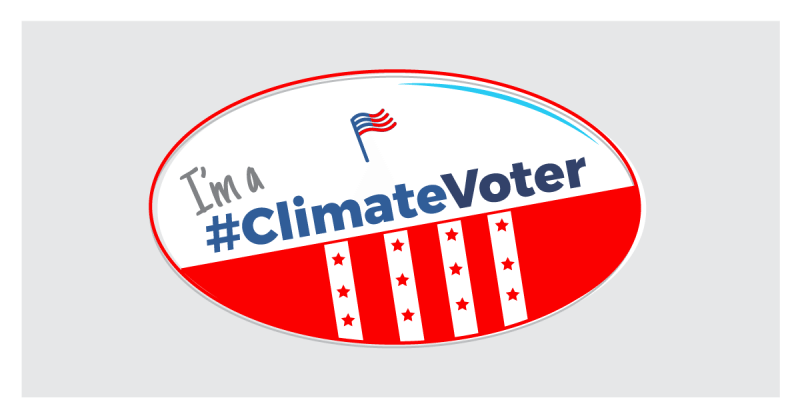
Source: Green Peace
What the action looks like: While we seek out personal changes that can help our carbon footprints minimize, working to get leaders elected who will tackle the problems of climate change and emissions can have the biggest impact of all. While we are all only responsible for our own carbon footprints, it is these elected officials who can demand accountability from larger entities in government, in industry, and in aggregate. So, you can make a huge impact by using your right to vote for candidates who prioritize and act on climate change. You can even volunteer your time and resources towards getting such climate positive candidates elected. The work isn’t done when the candidate who is more climate positive takes office, though, as it’s up to the electorate to keep those leaders accountable to their climate promises and their green goals.
What the impact is: It’s hard to quantify the impact of your contributions towards a climate-focused candidate, but once such a candidate is in office there’s truly no limit to what the end result could be.
Level of difficulty: Easy—you just need to educate yourself and you can get started today!
Relevant quotes, stakeholders, and resources:
7 Senate races to watch on energy and environment by EE News
How to Find Your Climate Candidates by Outside Online
“The most important action towards global warming is to tell your elected officials that this is a priority for you and you expect them to act on it. Citizens need to do the research to know who represents them, from school board up through the President, and have their contact information to weigh in. You don’t need to be a policy expert, just the fact that you express that it’s a pressing issue for you is enough to share with them.” – Andrea McGimsey, Senior Director, Global Warming Solutions Campaign
Join Climate Advocacy Groups
Source: Climate Advocacy Lab
What the action looks like: Beyond supporting specific climate candidates, many broader-focused groups exist that look to tackle climate change advocacy across all areas: pushing for regulatory changes, advocating in federal, state, and local elections, educating the public, and more. These groups can push for specific policies, fight injustice that is taking place, and help raise awareness and education on all issues related to climate change.
What the impact is: It’s hard to quantify the impact of your contributions towards a climate-focused candidate, but once such a candidate is in office there’s truly no limit to what the end result could be.
Level of difficulty: Easy—you just need to educate yourself and you can get started today!
Relevant quotes, stakeholders, and resources:
Campaign Carbon Footprints by the Washington Post
Educate Yourself and Others
Source: Sierra Club
What the action looks like: The saying “knowledge is power” may be cliche, but it became a well-known saying for a reason. When it comes to making sure you and your peers are motivated to take action on climate change and understand the best ways you can put up a fight against it, education must come first. Without adequate understanding of what climate change is, why it’s happening, and what can stop it, any advocacy or action will be stilted. Worse, a population that isn’t literate on climate, energy, the environment, and science, in general, are susceptible to being influenced by those trying to keep down the movement.
What the impact is: All of the above impacts may be for naught if they are implanted and supported by people educated by the issue, so it really all starts there. Further, according to a recent study in Yale School of Forestry & Environmental Studies, educated people who take action might actually find that these actions will be contagious to their peers, neighbors, and acquaintances:
For instance, several studies have demonstrated that the chances of an individual deciding to install solar panels increases as more panels are installed in their neighborhood or region. (One study calculated that for each additional installation in one California zip code, the probability of another increased by 0.78 percentage points.)
Level of difficulty: Easy—you’re already on this site, so you’re already taking the first steps towards educating yourself!
Relevant quotes, stakeholders, and resources:
The role of education in propelling climate action by The Commonwealth Education Hub
The role of climate change education on individual lifetime carbon emissions in PLOS One
How can environmental education help to combat climate change? by Iberdrola
“When researching and learning about climate, energy, and carbon footprints, people need to learn to go to the source. Trust the information and the evidence you can read yourself and whose sources you can trace and verify. That is the pillar of the Enlightenment that took us from the Dark Ages to now. The ability to question things and reason them out yourself by using peer-reviewed sources (that can be found at places like ScienceDirect, ResearchGate, or even Google Scholar) allows people to educate themselves and think critically about the best actions to take. This approach should not be left to just a handful of experts; it’s accessible to all and can be used by everyone.” – Greg P. Smestad, Ph.D. / Principal Consultant / Sol Ideas Technology Development
The post Empowering Individual Action To Fight Climate Change appeared first on Solar Tribune.
]]>